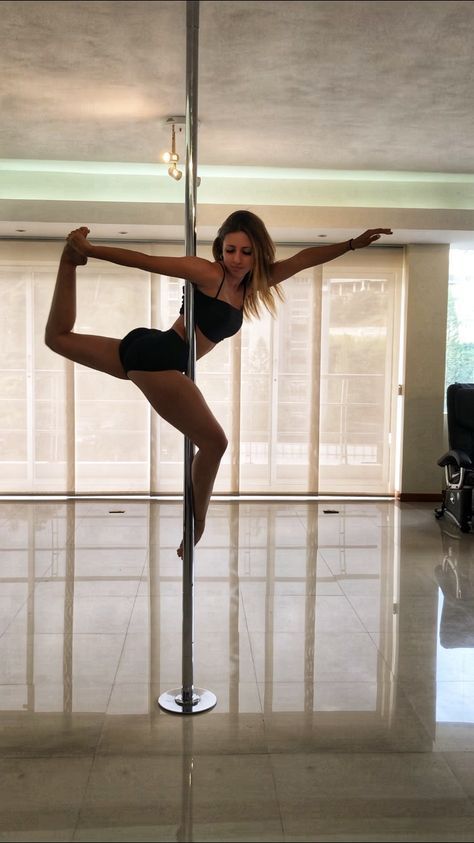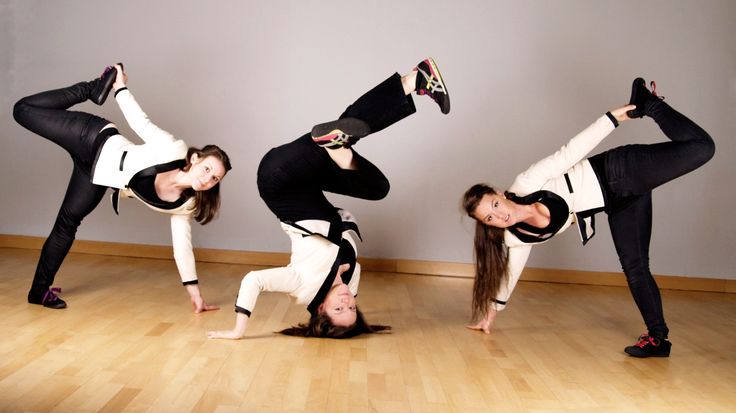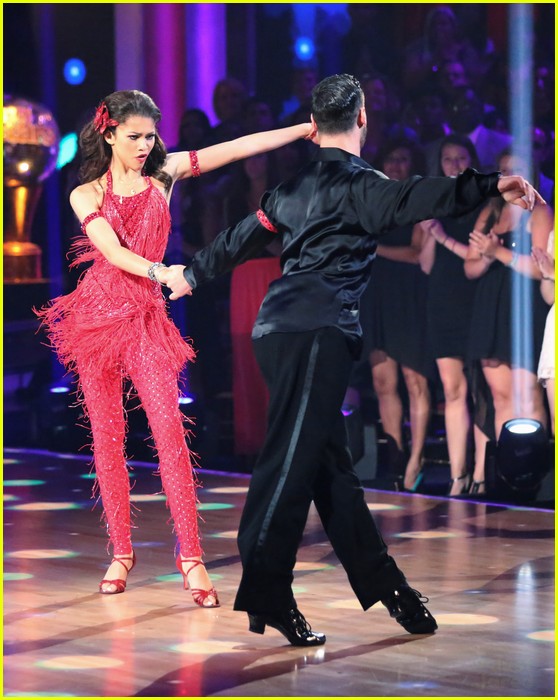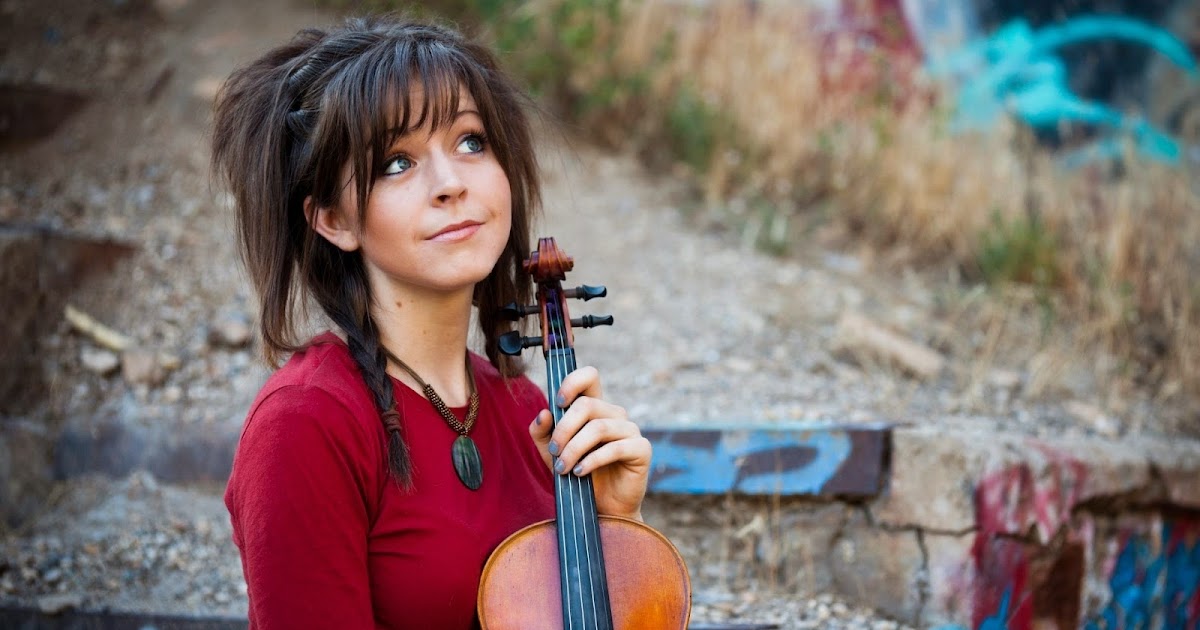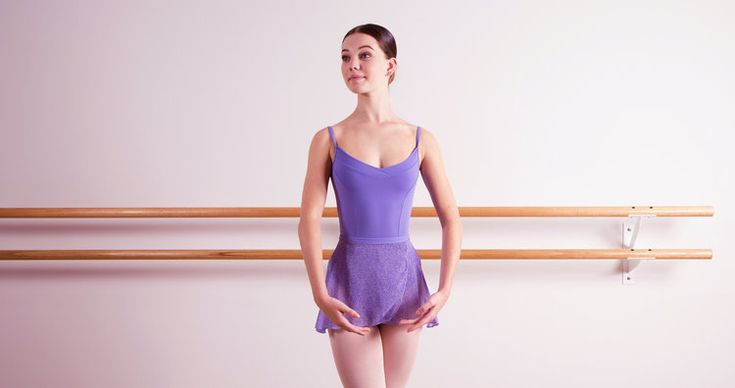How do you become a pole dancer
The Life-Changing Possibilities of Pole Dancing
When I started pole dancing, I was looking for a stress reliever. I had settled into a routine that mainly seemed to consist of, well, just work. This kind of one-track commitment was new for me: I grew up involved in activities ranging from gymnastics and dance to soccer and track. I knew I needed to try something different, to get myself motivated to move my body in ways that would bring me joy again.
I had tried pole dancing a few years back, and I remembered loving it, but classes were just too expensive for me to go consistently at the time. Now, with my first steady job post-college, it seemed like the right time to return. I tested out various places until I finally found my go-to: Brooklyn’s Finest Pole Dancing, a cozy studio on Carroll street. Not only was it a five-minute ride from my apartment, but I appreciated its intimate feel, and how Vel Francis, the studio owner, gave everyone individual attention. Her studio felt like a work-out and a therapy session all in one because of the diverse clientele that started to feel like family as we chatted during warm-ups. It became clear that this time was a collective sigh for all of us, whether someone wanted to blow off steam after work, or they were getting in some me-time after dinner with their kids. For me, simply entering this space was a relief because it had nothing to do with my job, family, or friends—it was a place of possibility where I could focus on whatever I wanted to achieve physically, emotionally, and with community.
I took Vel’s beginner class three times a week for three months until I moved up to intermediate/advanced and spin pole classes. Before I moved up, I would stick around to watch the advanced classes, studying their movements and meditating on how I would one day do those tricks with them. When I flew home to Chicago for long weekends or holidays, I would always make sure to visit Fly Club Chicago, my pole home away from home, for Divine Em and Caitlin Marco’s bubbly and inviting energy and range of classes.
As I became more obsessed with pole, I felt my strength and confidence increasing (I swear, no one will hype you up the way the pole community will!).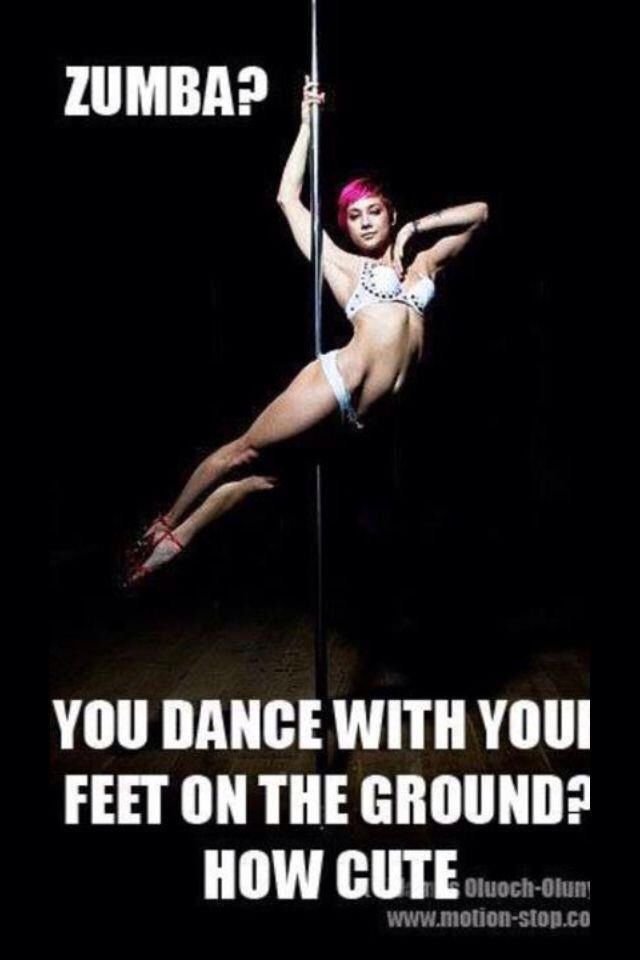 But most importantly, I was healing.
But most importantly, I was healing.
I suffered from PTSD my senior year of college after I was in a near-death accident. Fitness had always been my way of relieving stress, but injuries to my ribs and head meant that higher impact activities were out of the question. I fell out of touch with my body as I searched for other ways to relieve the new anxiety within it. Poetry served, and eventually gentler practices like yoga and salsa dancing did too. Pole marked a new phase in my healing, showing me how I could feel both emotionally soothed and physically strengthened at the same time.
Pole has helped me feel in control of my body as I live in a society filled with people trying to police women on what they should and shouldn’t be doing. It’s also helped me reconnect to my inner child, providing a space to play and try something new, a space to push past fears when it comes to mastering new tricks—a mentality I now apply to everyday life.
Thanks to virtual classes, Youtube, and Instagram videos, I’ve been able to continue growing as a pole dancer during the pandemic.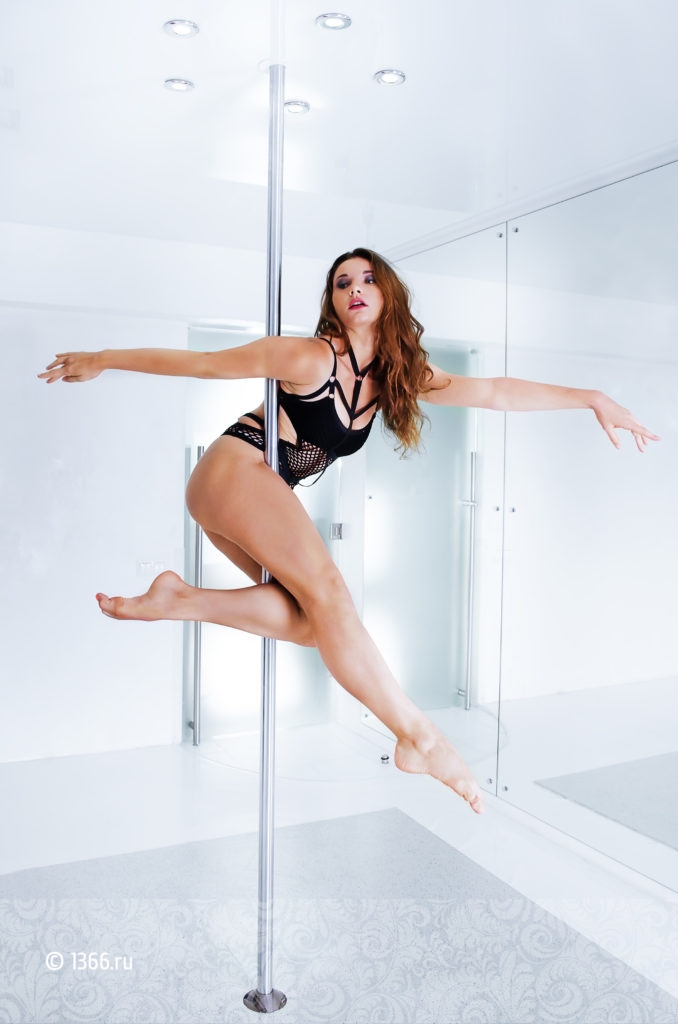 My mother helped me install an at-home pole—bolting it into the ceiling—in our attic after I found a 7 foot, 45 mm version on Xpole. (The activity has clearly found fans amid quarantine—when I first looked for a pole, they were all sold out.) It’s been a reliable opportunity to rest my mind, since it requires my full attention and presence—I can’t check my phone when I’m spinning by one leg! Being able to throw on any song to fit my mood and just float during my pole sessions has been a constant reminder that, no matter how much is out of my control, what is in my control is my mind, body, and joy.
My mother helped me install an at-home pole—bolting it into the ceiling—in our attic after I found a 7 foot, 45 mm version on Xpole. (The activity has clearly found fans amid quarantine—when I first looked for a pole, they were all sold out.) It’s been a reliable opportunity to rest my mind, since it requires my full attention and presence—I can’t check my phone when I’m spinning by one leg! Being able to throw on any song to fit my mood and just float during my pole sessions has been a constant reminder that, no matter how much is out of my control, what is in my control is my mind, body, and joy.
Most Popular
Below, three pole dancers who have inspired my journey share why they started the sport, what kept them going, and what it’s meant to them in this past year.
AnnaKia
AnnaKia is a professional aerialist who has danced on tour with Summer Walker. She’s the owner of HouseOfBaelien, an online vintage store filled with statement pieces.
Why she started pole dancing: I started pole dancing in 2012 after a really hard year of battling depression. Not only was I dealing with the loss of my father, I was also struggling with the loss of my identity. At the time, I felt like I no longer knew who I was anymore because I had always been identified and introduced as Dr. Jackson’s daughter. I was utterly lost! After the umpteen day in my room, alone and unsure, I ran across a pole dancer on YouTube and I felt a “that” spark of excitement. It was the first time in what felt like a long time that I felt anything other than sadness. I looked up my first class and it was history from there.
Most Popular
What pole dancing has meant to her this past year: Pole dancing has been so many things to me at so many different times. It's giving me life, given me friends and new family, it gave me access to my sensual self that I never knew.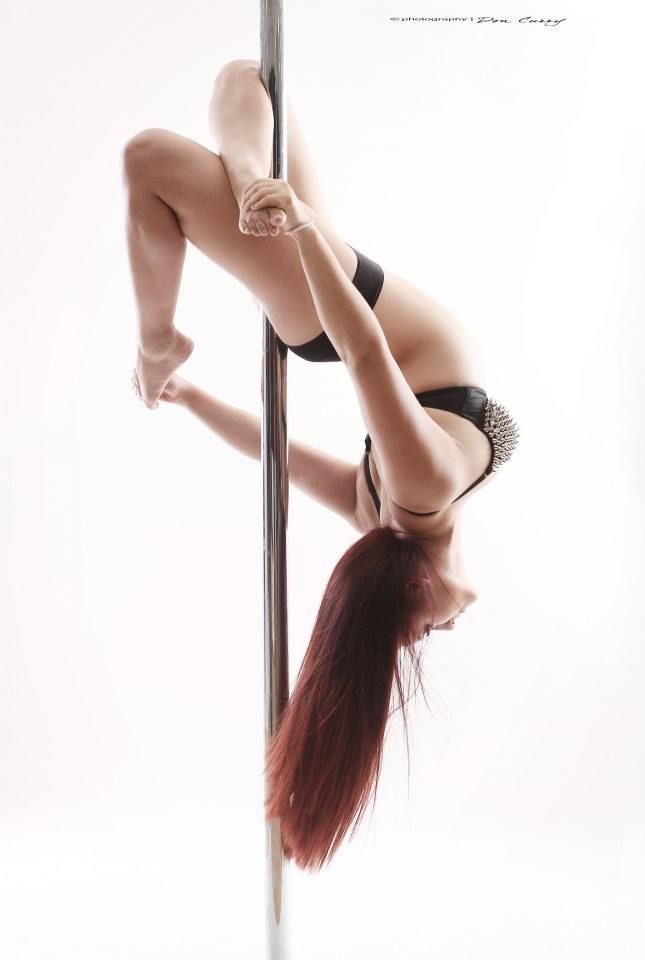 It’s been heartache, my source of income, my passion, a visual representation of me and what I am going through internally. It has saved me! During quarantine it’s only strengthened the bond and connection I have with pole. It keeps me grounded in the waves of my emotional self.
It’s been heartache, my source of income, my passion, a visual representation of me and what I am going through internally. It has saved me! During quarantine it’s only strengthened the bond and connection I have with pole. It keeps me grounded in the waves of my emotional self.
Her advice to those who want to start pole: My best advice when it comes to people who want to try pole is: Do it! Look up studios in your area and take a class. Don’t talk yourself out of it by saying my body isn’t ready, I am not strong enough, not small enough. Pole is for everyone and every body! As a whole we want to welcome everyone into our little piece of heaven.
Dalijah Franklin
Franklin is the founder of Black Girls Pole, a global community and movement diversifying the pole community by inspiring and educating women of color about pole.
Most Popular
Why she started pole dancing: I started pole with a friend just as something to try, but here I am 13 years later and it is a major part of my life and has become my business.
What pole dancing has meant to her this past year: Pole means confidence and empowerment to me. The amount of confidence and strength you gain by doing this sport is rewarding on so many levels. Pole to me in 2020 has been very humbling. I have been a pole dancer for 12 years. I became a mom this year and getting back into it after having a baby has been challenging! I appreciate my body so much more now for how strong it is and also learning to give myself grace as I gain my strength again and fall in love with this new body!
Why she thinks you should try something new this year: 2020 has been unlike anything we have ever imagined, so I think now is the time to reimagine hobbies, businesses, and what you will have done or created when we come out of this pandemic. There is no time like the present to try something new and see where it takes you!
Sammy Picone
Picone is a pole dancer who has danced, alongside AnnaKia, for Summer Walker’s tour.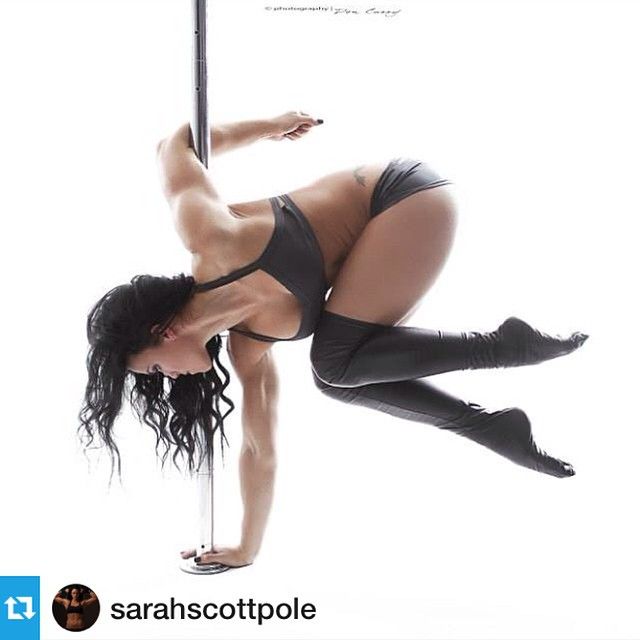
Most Popular
Why she started pole dancing:
My best friend convinced me to come to a pole class just before we graduated from college. I was in one of the lowest places of my life, recovering from a cancer diagnosis and an emotionally abusive relationship. I resisted going to the class wholeheartedly and thankfully was outvoted by my friends. The first few classes were difficult as hell because they forced me to confront many of the effects that the years prior had had on me mentally and physically. And yet the pain of confronting that disappeared into thin air the moment I found out I could invert...realizing my strength in that moment was the moment I knew I would pole for the rest of my life.
What pole dancing has meant to her this past year: Pole has provided me an outlet to press pause on the world in a lifesaving way. I’m sure many of us are familiar with the loop of anxious thoughts and negative self talk that often plays on repeat in our heads.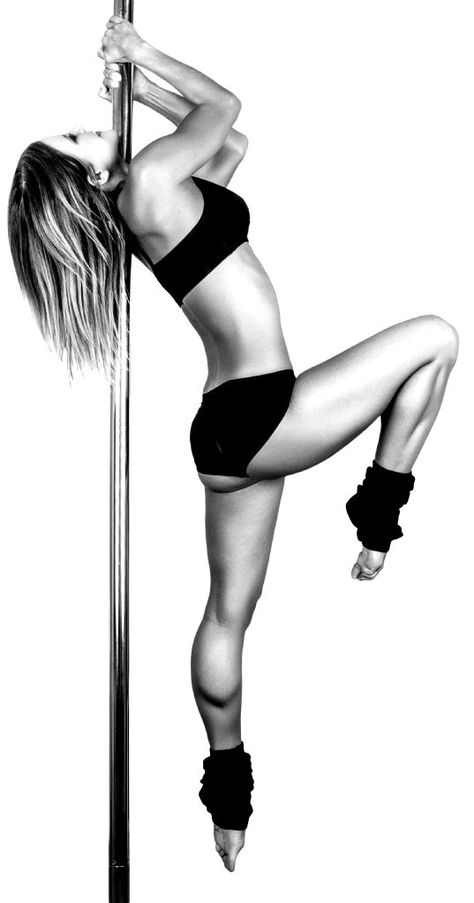 Pole has been the only outlet in my life thus far that quite literally brings my thoughts to a stop and allows me to bathe in silence for a period of time. It’s also allowed me to give myself permission to grow into—and to embrace—my power in ways that I am incredibly thankful for.
Pole has been the only outlet in my life thus far that quite literally brings my thoughts to a stop and allows me to bathe in silence for a period of time. It’s also allowed me to give myself permission to grow into—and to embrace—my power in ways that I am incredibly thankful for.
My relationship with pole has waxed and waned over the years and that hasn’t changed in 2020. That being said the moments that I have reunited with pole this year have been some of the greatest exhales; they’ve equipped me with the strength to persevere when I struggled to see the purpose in pushing forward.
Something she wants you to know about pole dancing:
For the past couple of years one of the main messages I have tried to communicate to my audience is: respecting where pole dance came from. There is a longstanding practice in the pole industry that attempts to separate pole dance from stripping and sex work and to vilify the two. Many fail to realize—because we often aren’t taught in the places we learn—that the art of stripping is a huge part of what laid the groundwork for the art form that us polers have today.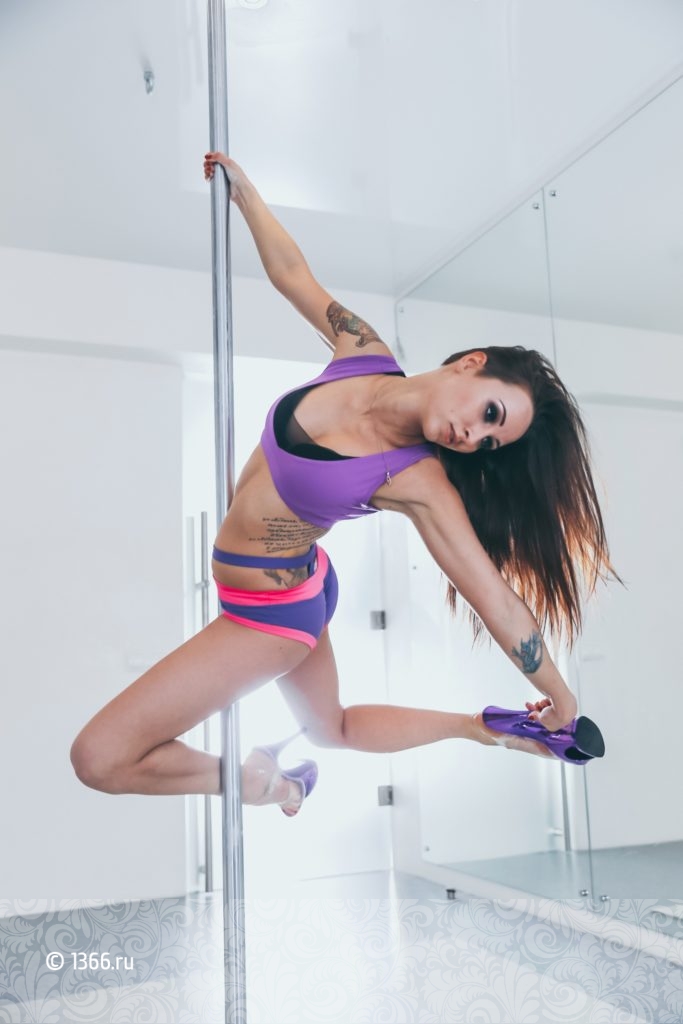 And respect should be paid along every step of one’s pole journey.
And respect should be paid along every step of one’s pole journey.
10 Things I Wish Everyone Knew About Pole Dancing
RoutinesI'm A Professional Pole Dancer: Here Are 10 Things I Wish Everyone Knew About Pole Dancing
|
Personal Story
I'm A Professional Pole Dancer: Here Are 10 Things I Wish Everyone Knew About Pole DancingWritten by Irmingard Mayer
Irmingard is a professional pole dancer, instructor aerialist with a background in gymnastics and theater. She is AFAA group fitness certified as well as pole fitness certified through Xpert and ElevatED.
I'm A Professional Pole Dancer: Here Are 10 Things I Wish Everyone Knew About Pole Dancing
I'm A Professional Pole Dancer: Here Are 10 Things I Wish Everyone Knew About Pole Dancing I'm A Professional Pole Dancer: Here Are 10 Things I Wish Everyone Knew About Pole Dancing I'm A Professional Pole Dancer: Here Are 10 Things I Wish Everyone Knew About Pole Dancing I'm A Professional Pole Dancer: Here Are 10 Things I Wish Everyone Knew About Pole Dancing I'm A Professional Pole Dancer: Here Are 10 Things I Wish Everyone Knew About Pole Dancing I'm A Professional Pole Dancer: Here Are 10 Things I Wish Everyone Knew About Pole Dancing
I'm A Professional Pole Dancer: Here Are 10 Things I Wish Everyone Knew About Pole DancingLast updated on February 15, 2021
Share on:
Share on: I'm A Professional Pole Dancer: Here Are 10 Things I Wish Everyone Knew About Pole Dancing I'm A Professional Pole Dancer: Here Are 10 Things I Wish Everyone Knew About Pole Dancing I'm A Professional Pole Dancer: Here Are 10 Things I Wish Everyone Knew About Pole Dancing I'm A Professional Pole Dancer: Here Are 10 Things I Wish Everyone Knew About Pole Dancing I'm A Professional Pole Dancer: Here Are 10 Things I Wish Everyone Knew About Pole Dancing
I started pole dancing after seeing it performed at a live event in New York City.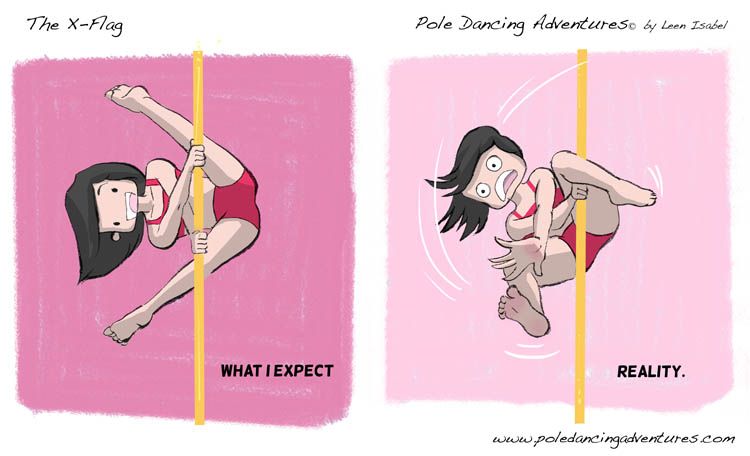 The women mystified me with their grace and strength, and I wanted to learn how to move like them. After my first class, however, I found that pole dancing was hard—every muscle in my body ached for days.
The women mystified me with their grace and strength, and I wanted to learn how to move like them. After my first class, however, I found that pole dancing was hard—every muscle in my body ached for days.
After much practice and training, I'm now proud to say I'm a professional pole dancer and aerialist. But it wasn't easy. Here are 10 things people might not know about this fitness form.
1. Most pole dancers, regardless of age, are in the best shape of their lives.
Pole dancing is a full-body workout. It is resistance training and cardio in one, and flexibility is improved as well. Pole dancers perform acrobatic tricks either suspending their weight or propelling it around a metal pole. The simple act of climbing a pole is an incredible display of strength. It is no surprise, then, that most pole dancers insist they have never looked or felt better.
Natasha Wang, a world champion pole dancer, didn’t even start the exercise until age 29.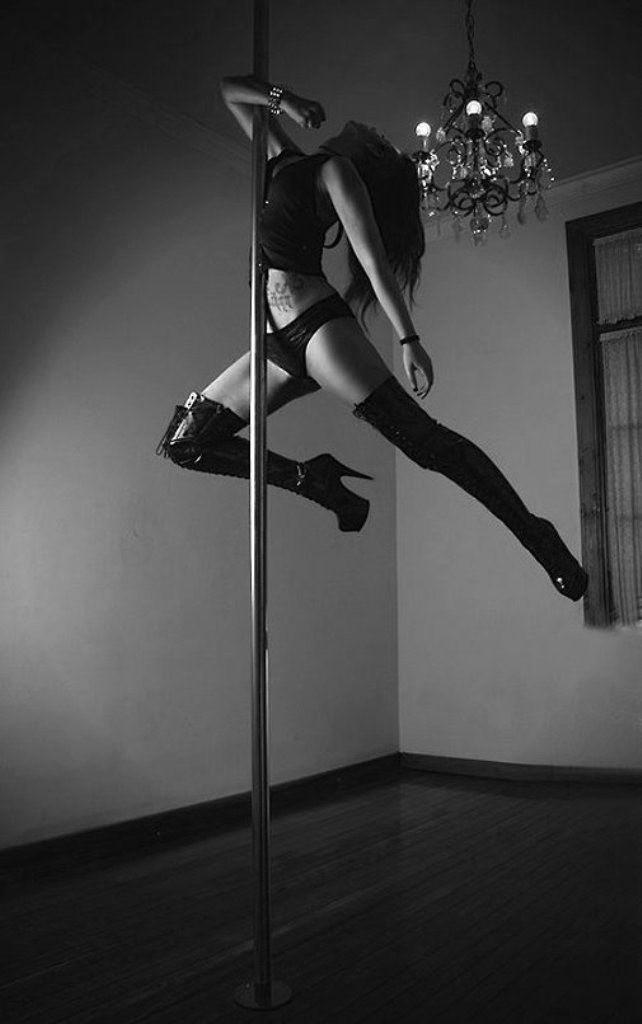 Greta Pontarelli is a champion pole dancer at age 63—and she only began a few years ago!
Greta Pontarelli is a champion pole dancer at age 63—and she only began a few years ago!
2. There are many different types of pole dancing.
Pole dancing is extremely versatile. There are three main branches: sport, art, and sexy:
- In sport, you have the serious athletes performing difficult tricks and displaying unfathomable muscular strength. (Some have even petitioned for pole to become an Olympic event!)
- Then there are also those who embrace the artistic side pole has to offer. The simplicity of a vertical apparatus like the pole is appealing in that there is no shortage of creativity—so many stories can be told. Many pole dancers perform barefoot and have been known to incorporate modern dance, props and costumes into their routines.
- Finally the sexy side of pole is still practiced by many.
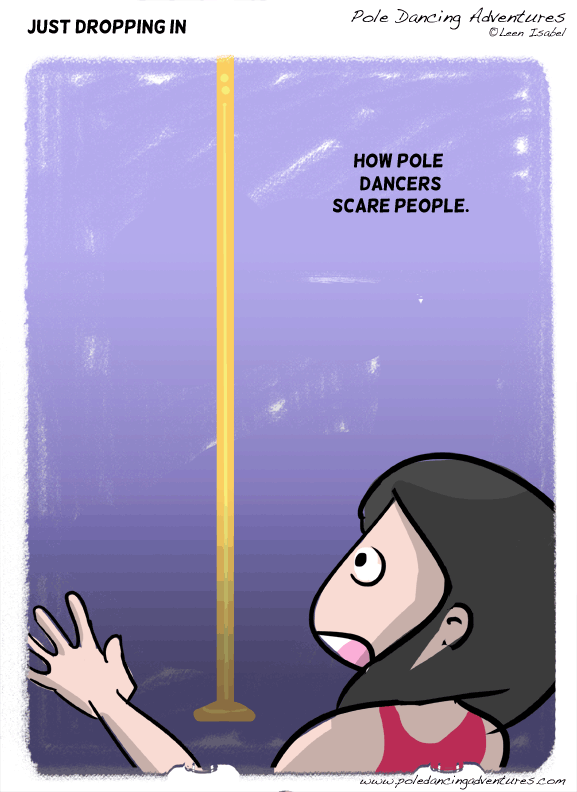 These dancers usually wear heels and favor more sensual, erotic movement.
These dancers usually wear heels and favor more sensual, erotic movement.
Although there is some debate within the community about which direction pole is heading, all three forms flourish, and many pole dancers enjoy all styles. There is something for everyone!
3. You need your skin exposed to grip the pole.
Pole dancers must have their legs, arms and stomachs exposed to safely grip the pole. There are some grounded spins, poses, and floor work that can be performed while wearing pants, but in order to perform more advanced moves, we must have the proper amount of skin exposure.
At first, the idea of working out in a sports bra and tiny shorts may seem intimidating. But most new pole dancers quickly discover they are having too much fun to worry about what they look like. Their focus shifts instead to what they can accomplish—a freeing notion, really, that can help build confidence.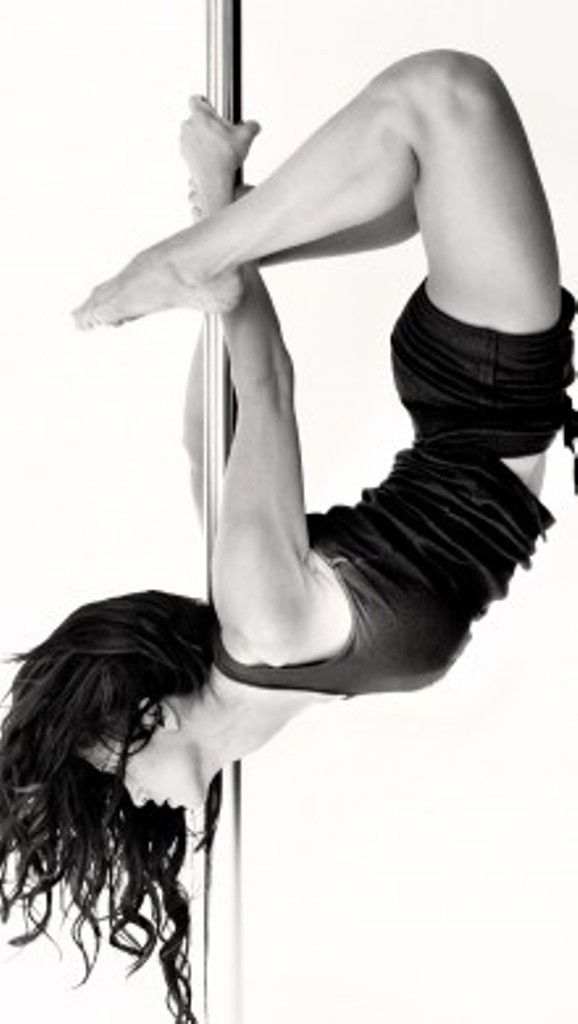
4. It can be dangerous without proper training.
Although pole dancing is fun, it is a serious athletic endeavor that should not be taken lightly. Some people do not realize how challenging pole can be on a first attempt (re: every muscle in my body ached for days). In addition to bruises, pole dancers can experience shoulder or back pain with improper technique or overtraining.
You should always learn from a certified instructor. If training from home, take time properly installing your home pole according to manufacturer instructions and vetting a reputable online learning platform. If you're too eager to flip upside down, it can be especially dangerous and can lead to injury.
That said, I encourage everyone interested in pole dancing to go through gradually progressive training with a professional.
5. Men can (and do!) pole dance.
The number of men pole dancing continues to grow every year.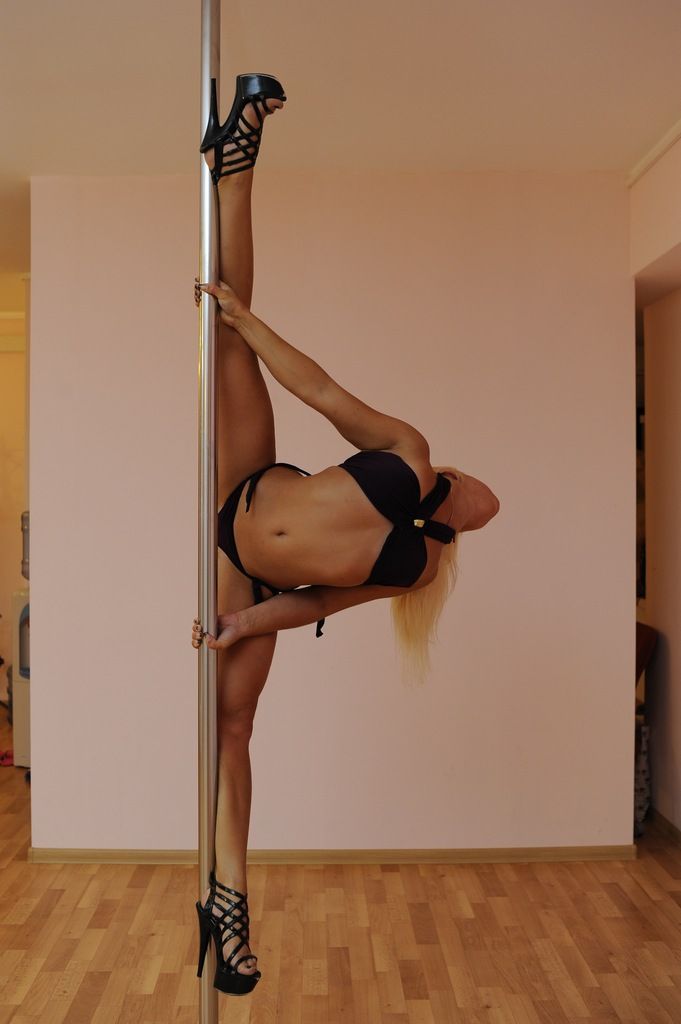 There are men’s divisions in competitions now, and I see more men joining classes I take or teach than ever before.
There are men’s divisions in competitions now, and I see more men joining classes I take or teach than ever before.
Men’s natural inclination toward upper body strength makes them ideal candidates for the sport. There are many ancient forms of pole dancing such as Mallakhamb, a traditional Indian sport where the practitioner performs yoga postures on a wooden pole—and has actually been performed exclusively by men throughout history.
6. “Not having upper body strength” is not an excuse to avoid it.
I understand that you may be nervous to try pole dancing. Maybe you don’t feel you are at your ideal weight, or you think you have no rhythm, or you think you're too old. But I encourage you to stop creating roadblocks for yourself. The best way to get better at something is to work on it! Every athletic journey requires a first courageous step. You'll grow over time as you build skills, strength and body awareness. Overcoming feats is part of what's so inspiring and empowering about pole.
Whether you’re uncoordinated and can’t lift your own body weight or you're an athlete with gymnastic capabilities, there is always a new trick or transition to learn with pole dancing. The process of growth never ends, and the possibilities can be as creative as your imagination allows them to be.
7. It’s not always so sexy.
Pole dancing is not always as overtly sexual as people may believe. The process of training is often full of awkward and unglamorous moments. Many of us end up with bruises, burns, and scrapes from trying new moves. And although we may wear sports bras and tiny shorts when performing, most dancers opt for comfort over fashion in between training sessions.
8. But it can be very sexy.
The seductive allure of pole dancing still remains steadfast. There was a period of time when pole dancing first became mainstream where many pole dancers sought to distance its association with strip clubs.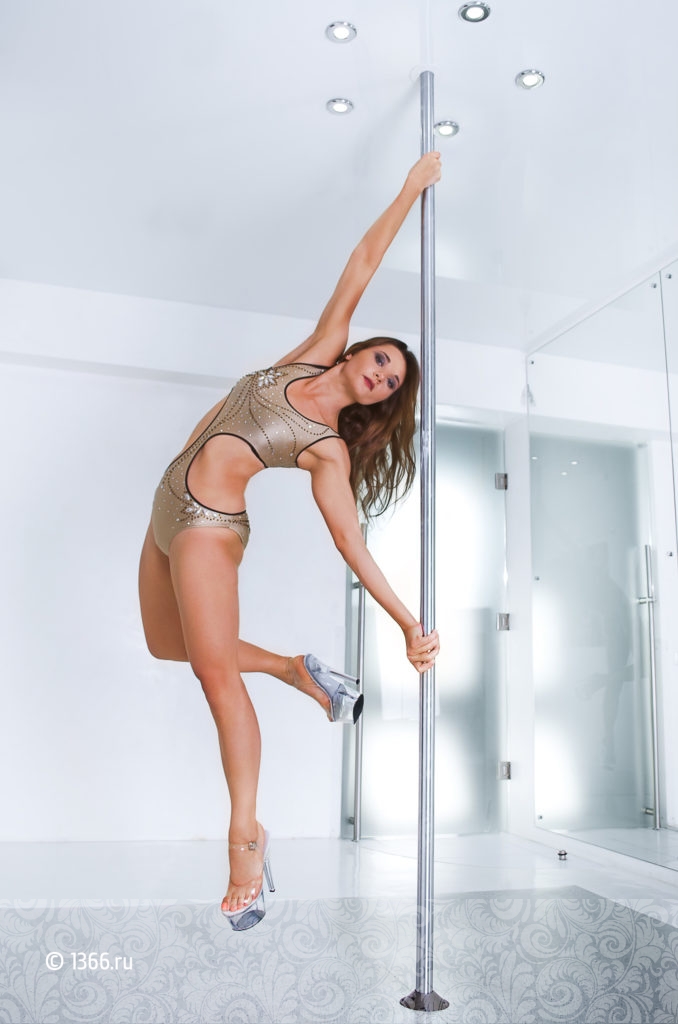 They felt this link delegitimized efforts to be taken seriously. The community has since evolved to understand this denial as a form of appropriation and recognizes with respect the roots this art form holds in exotic dance.
They felt this link delegitimized efforts to be taken seriously. The community has since evolved to understand this denial as a form of appropriation and recognizes with respect the roots this art form holds in exotic dance.
While many styles of dance and movement currently inspire modern pole dancing, the kind we practice today would not exist without strippers. Many of the first informal pole dancing classes in the US took place in strip clubs and many of the first pole studios in the US were founded by strippers who became small business owners and entrepreneurs.
9. The community is very tight-knit.
Because what we do is still considered taboo by many, there is a unique closeness that bonds us together. There are pole dancers of all professions, ethnicities, religions, cultures, sizes, and ages. I have friends all over the world because of pole dancing, and I have friends who have been able to travel the world because of it.
We support each other through learning new moves. We share each other’s videos, and we watch each other perform. This shared interest bonds us with a special understanding, just like any other team sport.
10. Pole dancing can be emotionally healing.
This is one of the biggest reasons I've stuck with pole dancing as long as I have. The physical benefits are great, but the feeling you get from mastering a move or expressing a particular emotion is indescribable. For example, when I am able to assist a student without any fitness background in their first pole climb, it is an honor to witness their feeling of accomplishment and resulting boost in self-confidence.
You can dance out any emotion in class, whether joyful, angry, or sad. The combination of athletic skill and artistic influence makes it unique to any other form of dance or sport. To me, it is both dance and sport woven together into one beautiful, athletic art form.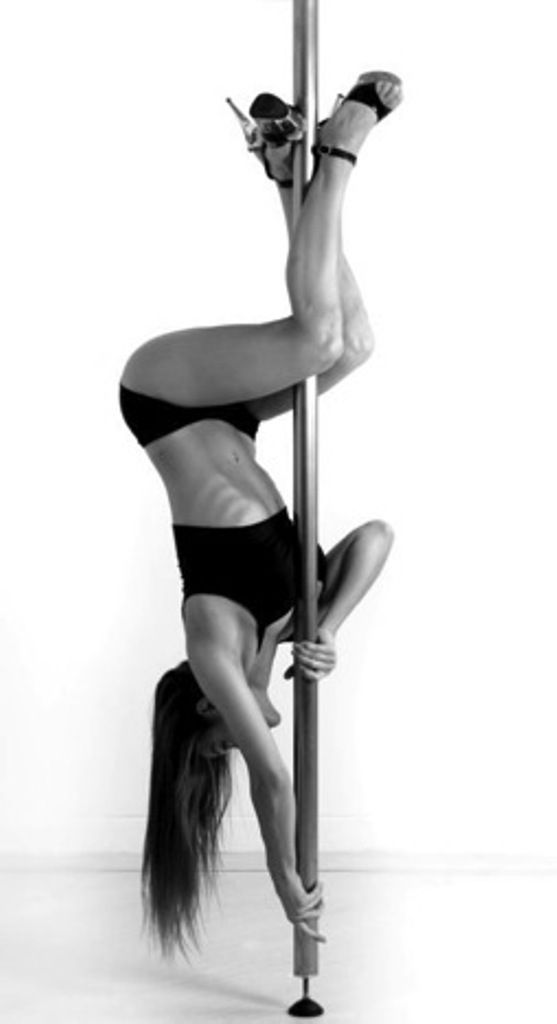
More Movement
- Feng Shui For Your Bedroom: Rules For What To Bring In & Keep Out
- Types Of Yoga: A Guide To 11 Different Styles
- What Is GABA: Health Benefits Supplements & More
- K-Beauty—What Is Korean Beauty
- Intermittent Fasting Meal Plan: Exactly When & What To Eat
Latest Articles
https://www.mindbodygreen.com/articles/things-i-wish-everyone-knew-about-pole-dancing
Save item To Select a folder+ Add New Folder
Folder Name
Your article and new folder have been saved!
In order to save this article, you will need to Log In or Sign Up!
Close
How to get started in pole dance
Irina Malchukova
opened a pole dance studio
Author profile
I taught pole dance for six years, five of which I ran my own pole dance studio.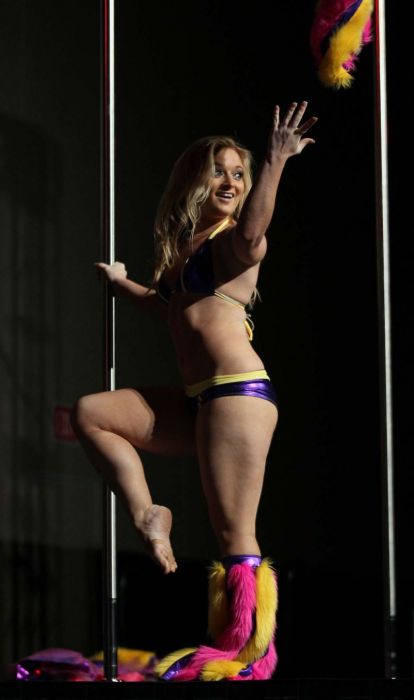
To do this, I completed two special courses and participated in several master classes, my productions won prizes in regional competitions more than once.
I'll tell you how to start practicing for a beginner, what to buy, why half-dance can replace fitness and how to choose the right pole dancing studio.
What is pole dance
Pole dance is a pole dance that combines elements of choreography, gymnastics and acrobatics. In fact, this is a general concept. Now there are several directions that differ from each other: Exotic Pole Dance, Pole Art and Pole Sport. I will tell about them further.
Pylon, or pole, a polished metal tube for grasping with hands and clutching with legs or other parts of the body. Its diameter can be 40, 42 and 44 mm.
/motivation-sports/
Work out with a trainer and try different activities: 7 tips to love the sport
Usually made of stainless steel, this ensures a smooth glide and at the same time a good grip on the skin.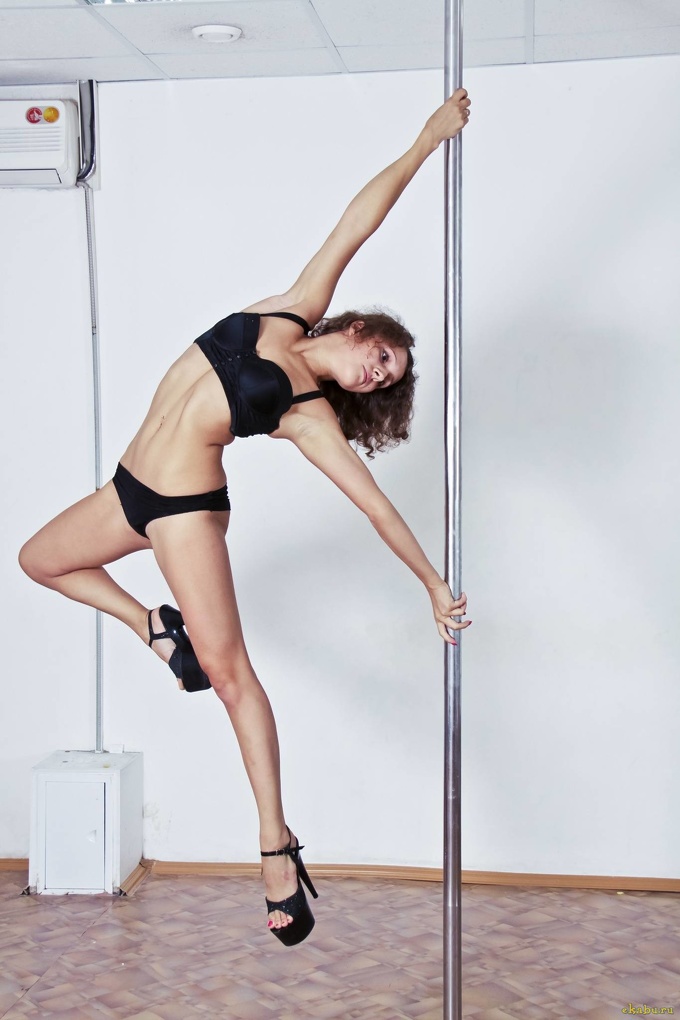 Pole dancers don't like it when a pole is called a pole.
Pole dancers don't like it when a pole is called a pole.
There are static poles - about tricks that are performed on such a pole, they say "in static", and also rotating ones - dancers say "in dynamics". In what follows, I will use these terms.
Most often, poles in professional studios have two modes at once. Due to simple manipulation, "dynamics" turns into "statics". In competition, dancers must be able to do tricks on both static and rotating pylons.
These are poles, or pylons - such were in my studio. I twisted the pylon from dynamics to static with the help of a key. Photographer: Vyacheslav RuchkinPylons are fixed in different ways:
- Widespread between floor and ceiling.
- With one fixed fixing to the floor or ceiling only.
- Two fixed fasteners at once. This option is the most reliable.
One fixed mount in studios is also acceptable. If the pole is installed only at a distance in a dance school, I do not recommend doing complex tricks there or spinning strongly.
There are also portable pylons - these are structures that can be transported with you or quickly assembled on site. Usually they are used for performances, since it is not safe for students to study on them in a constant stream.
Pylon supports that are fixed to the floor and ceiling. Source: Pilonexpert Portable pylon. Source: thepole.euelements are called tricks that are done on a pole. There are several levels of the pylon where they are performed:
- Upper - acrobatic stunts are performed here at a height of more than two meters above the floor.
- Medium - perform rotations, plastic or dynamic elements at a height of 1-1.5 meters above the floor.
- The lower one is the stalls. Usually this is plastic or acrobatics, which is performed both with and without a pylon.
In 2021, pole sport was officially recognized in Russia. This means that the Ministry of Sports of the Russian Federation will coordinate all the rules by which half-dance competitions are held, there will be sports categories for participants, judges will have to undergo certification, and half-dance federations will have to be accredited.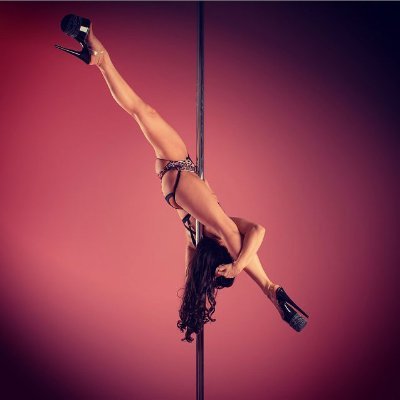
Order of the Ministry of Sports of the Russian Federation, in which half-dance was included in the register of sports
Dance schools offer half-dance classes not as a sports discipline, but as exercises for stretching, working out the muscles of the legs and arms.
| These are elements on the pylon, or tricks |
Half-dance directions
Pole Sport or FitnessIn this direction, most of the time is devoted to trick and power elements on the pylon. There are about 70% of tricks in the performance, and 30% of the choreographic or parterre part. To simplify, half-sport is similar to gymnastics.
Competitions are often held in this direction. Mandatory elements are defined for them - those that a dancer must be able to do and show at the competition. Each element is evaluated by points: they look at the purity of execution, clarity of lines, and other criteria. Sometimes there are restrictions on touching the floor during a performance.
Pole dance directions
Exotic Pole DanceThis is a dance direction where the emphasis is on choreography, plasticity and musicality. Exotic is danced in special shoes - strips, they have a high platform and heels. This is the most feminine direction. If compared with others, we can say that exotic is strip plastic with a pylon, where there is a trick part.
Important: in exotic pol-dance one does not completely undress. You can take off some item of clothing in the room - gloves, a neckerchief, ears from your head. But it is forbidden to expose the genitals or breasts.
This is what special shoes for exotics look like - strips. Photographer: Sergey PatrushevExotic pole dance is also divided into several types.
Exotic Flow features smooth and slow movements. The ratio of tricks and choreography is about 20/80. It does not require complex elements, but acrobatic stunts are more like dance accents. The main thing in this type of dance is the choreography at the pylon and the parterre technique at the very bottom.
It does not require complex elements, but acrobatic stunts are more like dance accents. The main thing in this type of dance is the choreography at the pylon and the parterre technique at the very bottom.
Exotic Hard - more energetic and sharp dance. The ratio of trick and choreographic parts is 70/30.
The main thing here is the ability to perform acrobatic elements on the pole in strips. The image and idea of the dance are also important.
Energetic exotic hardOld School is the most sensual and feminine direction. The ratio of tricks and choreography is 40/60.
Particular attention is paid to musicality, dance elements, and tricks are chosen as smooth as possible.
Sensual old school directionPole dance direction
Pole ArtThis is a harmonious combination of power elements and choreography, that is, 50% dances, 50% tricks. Artistry and presentation are important here. For example, sometimes they dance a modern stage dance, only with a pylon. At pol-art competitions, revealing and defiant clothing, sexual movements are prohibited.
The main difference between half-art and exotic is that it is not a seductive dance that shows sensuality and femininity. Half-art is danced not in strips, but barefoot or in special shoes, the clothes are strict, not sexy, there are no playful movements or coquetry with the audience. If in exotic the task is to seduce the viewer, then in half-art it is to tell a story, show the emotions and experiences of the hero.
All directions of half-dance are intertwined with each other. It will not be possible to dance exotic or art without tricks, so the basic elements of half-sport will have to be mastered. At the same time, staging a half-sport number will not do without choreography.
At the same time, staging a half-sport number will not do without choreography.
I recommend combining two directions: trick part and dance part.
Pole art is reminiscent of stage dancingHow pole dance can be useful
Half dance seems to be easy because the dancers' movements are light. In fact, you need endurance, flexibility, coordination.
Calorie consumption calculator for half-dance classes
One session actually replaces a circuit training, where exercises for different muscle groups are repeated several times - the same number of calories can be spent.
In addition, pole exercises train the skill of controlling the whole body. You need to be able to keep yourself on your hands, on your feet, to maintain balance in static. Different muscles work, over time the body becomes toned. Due to twists on a rotating pylon, the vestibular apparatus is trained.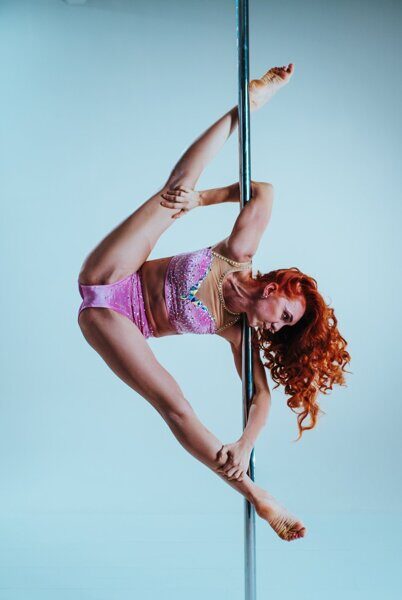
Abs and back. Many tricks must be done statically. For example, handstands. In this case, all the stabilizing muscles are involved, the press and back work, the ligaments are strengthened, strong core muscles are formed.
/list/sports-myths/
“We need to close the carbohydrate window” and 9 more common myths about sports and health
Upper body. Use your hands to climb the pylon and hold your own weight. Shoulders, biceps and triceps, pectoralis major and other chest muscles, upper back work.
Lower body also works. For example, there are hangings on the legs - if you do not strain your leg muscles, you can fall off the pylon. Body weight must be maintained with the help of the muscles of the thigh and calves, gluteal muscles. Some entry-level twists work the upper thighs, glutes, and lower back at the same time.
Stretch - there are beautiful elements that require stretching the legs and a flexible back. I recommend attending stretching classes separately. If this is not possible, performing tricks on the pylon will eventually develop plasticity anyway.
I recommend attending stretching classes separately. If this is not possible, performing tricks on the pylon will eventually develop plasticity anyway.
In addition, tricks must be constantly practiced - this requires stamina.
I will also note: many people gain self-confidence, because each mastered trick is a small victory.
Who suits half-dance
The most difficult thing is to decide to come to the first lesson. Popular newbie fears:
- I can't do it;
- everyone already knows how, but I don't know anything;
- I don't have enough strength, I won't lift myself onto the pylon;
- I don't have the ear to dance;
- I am overweight;
- everyone has splits, but I don't have a stretch.
In fact, everything is not so difficult. You can start from scratch without any preparation.
/fitness/
How to save money on sports
Even if a person was a professional athlete or dancer, he too may fail at the first training session.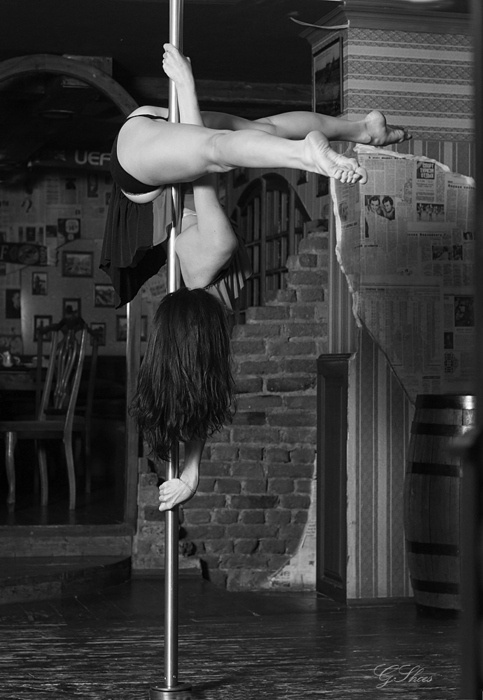 And this is absolutely normal, because pole exercises are a special load: the work of the whole body, coordination, grip due to the skin.
And this is absolutely normal, because pole exercises are a special load: the work of the whole body, coordination, grip due to the skin.
Usually students are divided into groups of beginners and those who have been studying for a long time. This is done for convenience: everyone works out the same tricks, can see each other's mistakes or direct a neighbor on the pylon in the right direction. Beginners can safely join groups of beginners: they are not far behind in the program and will quickly catch up with their level.
I note that the pole is an amazing thing: at the very first training, a person understands whether it is him or not. In six years, I have never met a person who quit half-dance after three, five, ten classes. Usually a student lights up and stays for a long time, or realizes that he is interested in another sport, and is no longer interested in half-dance.
Development is gradual. First you start to hold on to the pylon, then you know how to spin and climb it correctly, and then a whole world of tricks and combinations opens up. I want to do and try everything, capture it in a photo or show it in a dance number. I would say that the excitement turns on: can I do it. It moves forward, so classes are rarely abandoned.
I want to do and try everything, capture it in a photo or show it in a dance number. I would say that the excitement turns on: can I do it. It moves forward, so classes are rarely abandoned.
But half-dance is hard. You have to work on yourself, laziness, fears and pain. Sometimes you have to work out the same element twenty, thirty, forty times - this can get boring and exhausting. You really need to catch fire and be hardy - without this, nothing will work. Sometimes you have to wait a long time for results - both in tricks and in terms of physical form.
Dance studios often hold open lessons or give the first lesson for free. It is better to use this opportunity to try half-dance and understand whether you like it or not.
How is the half-dance class
Warm-up. At the beginning of each lesson, regardless of direction, 10-15 minutes - warm-up from head to toe.
If the student is late, he warms up on his own or is not allowed to the lesson.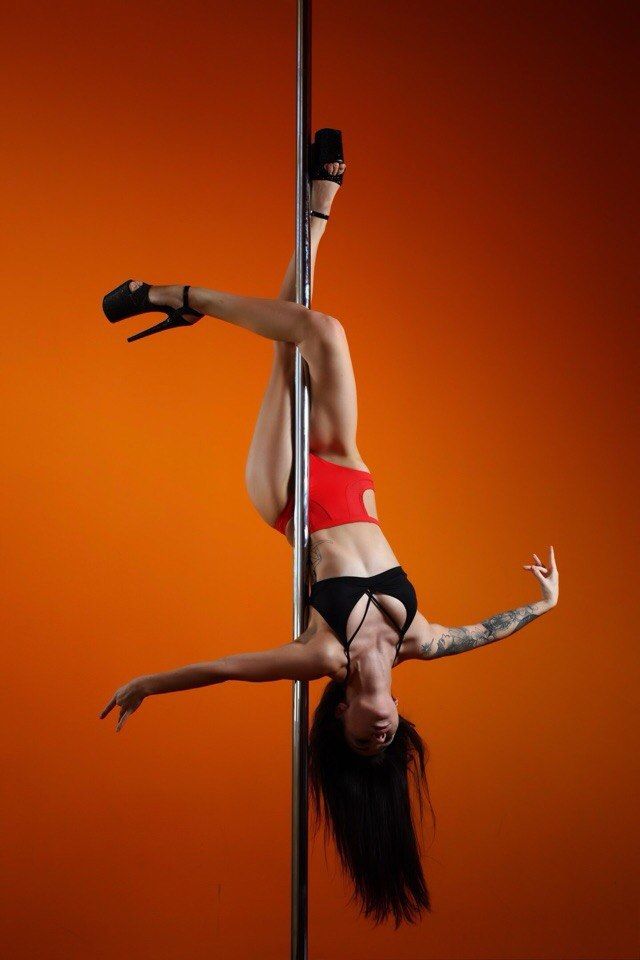 Without warming up the muscles, you can get injured - this part of the workout is mandatory. In semi-sports, attention is paid to the joints, and in exotics, they can include light basic dance elements: various waves, hip and chest rotations.
Without warming up the muscles, you can get injured - this part of the workout is mandatory. In semi-sports, attention is paid to the joints, and in exotics, they can include light basic dance elements: various waves, hip and chest rotations.
Main part. After the warm-up, the main part comes: in exotic or art, they learn the movements and the connections between them or repeat what they learned earlier. As a rule, it takes from three to six lessons to practice the dance, and from two to four, depending on the complexity, to practice the dance.
/stretching/
How I Became a Stretching Instructor
In a semi-sport, the lesson is different: the trainer explains and shows the trick that needs to be mastered and done. Up to two people can practice on one pylon. If more, the students are already uncomfortable: they will not have time to fix the element.
Periodically repeat old tricks or spins. This shows progress well: you can compare how the element was done before and how it is done now.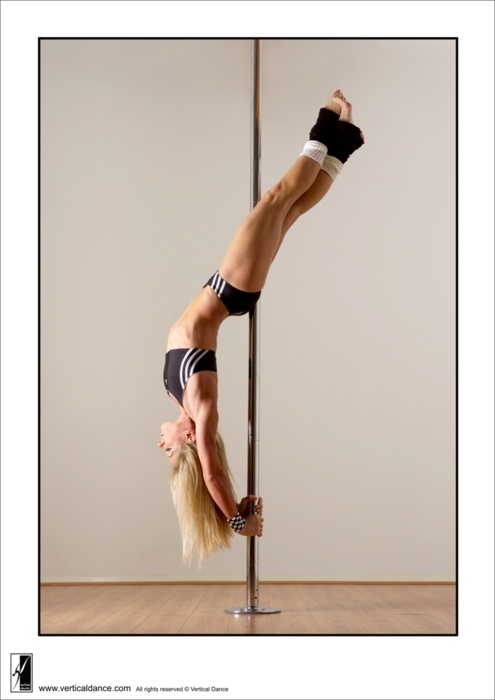 If the student already knows several tricks, the coach comes up with combinations - when you go from one element to another.
If the student already knows several tricks, the coach comes up with combinations - when you go from one element to another.
Learning goes from simple to complex. For example, at first there will be simple elements like a “barrel” - they are needed so that the student gets used to the grip with his hands and steps over the fear that he will fall from the pole.
At the first lesson, it seems that you are not holding on and constantly slipping, this is normal. Then the hands get used to it, stop sweating, there is strength in the muscles and self-confidence.
For half-sports, there is an example program for students to learn tricks. Of course, everyone goes at their own pace, but after a month or two you need to be able to do the simplest grips, for example, hanging on the far and near leg, on the elbows.
Beginner's version of twist - "barrel". Source: body-bar.ru Hanging on the far leg is already more difficult Every studio must have safety mats: you learn to perform complex tricks only with them. But beginners are also offered to take a mat so as not to get injured.
But beginners are also offered to take a mat so as not to get injured.
There is always alcohol or vodka and a rag in the studio - this is necessary to degrease the pylons, otherwise there will be no adhesion. Students can also use talcum powder or powder that dries their hands or feet so that they do not slip on the pole and do not roll off it. There are also other means for this, such as magnesia.
I don't recommend using talcum powder or anything else, otherwise your hands and feet won't get used to the grip - it's better to learn how to hold on right away without traction aids. Moreover, it is forbidden to use them at half-dance competitions.
Cooldown may vary between dance studios. Usually, after the dance part of the exotic, there is a slight stretch, and in half-dance they finish off the muscles: they pump the press, sometimes with a pylon, do push-ups, stand in the plank.
How are performances and pole dance competitions
Reporting concerts. Each studio holds reporting concerts, in which everyone can participate. Coaches prepare group numbers - not only dance, but also stunts, as well as solo performances when a person performs alone.
Each studio holds reporting concerts, in which everyone can participate. Coaches prepare group numbers - not only dance, but also stunts, as well as solo performances when a person performs alone.
As a rule, they start preparing for the reporter in advance - several months in advance. Sometimes concerts are held not in the studio, but in a cafe, restaurant, or even in the Palace of Culture. These are bright events in the life of students - their relatives and friends come to support them, and the dancers receive applause and a sense of the stage.
Reporting concert of my former studio. Photographer: Sergey PatrushevCompetitions. They are held in all directions of half-dance.
In half-sport, you need to show combinations of tricks that are included in the mandatory program. They must be performed on two pylons: static and rotating. There must be a dance part, but it rather fills in the gaps between the tricks.
Participants usually qualify for local city competitions or video selection.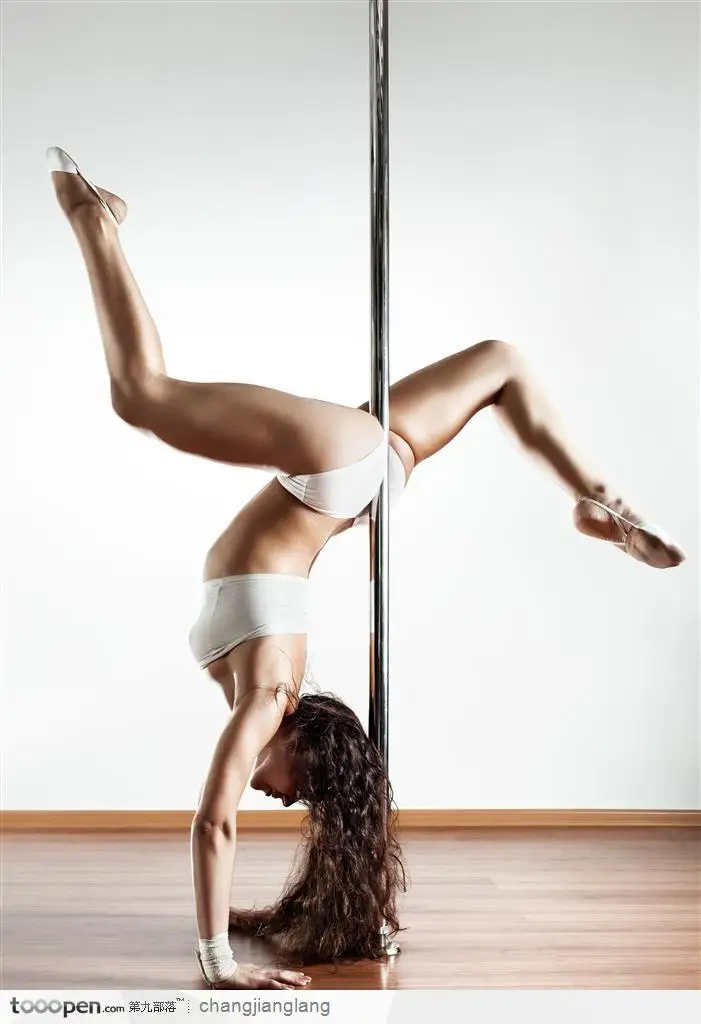 Competitions are easy to find: you can simply google or search for groups of competitions in social networks. The coaches themselves also follow the latest information and invite students to participate. Anyone can apply for the competition.
Competitions are easy to find: you can simply google or search for groups of competitions in social networks. The coaches themselves also follow the latest information and invite students to participate. Anyone can apply for the competition.
/spravka-dlya-sorevnovaniy/
How to apply for a certificate for participation in competitions
There are several categories: beginners, intermediate level, pros, children, duets, group performances. Well-known coaches and dancers are invited to the jury. All participants receive certificates or diplomas for participation, and the winners receive medals and prizes.
In exotic there is no obligatory condition to dance with two poles, the dancer can choose the pole mode independently. But you can only perform in strips - the jury evaluates how well the dancer knows how to use shoes. There are also categories here, and sometimes participants are divided into areas: old school, flow and hard.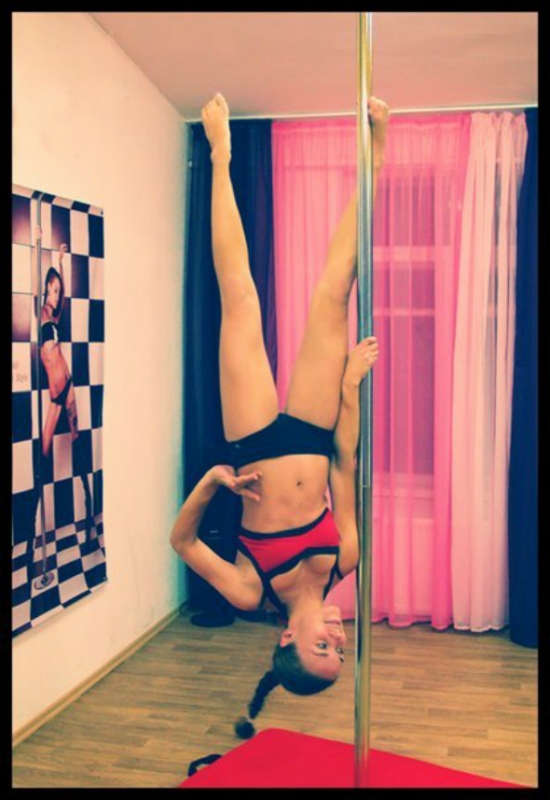
As part of the competition, invited jury members often give master classes and hold demonstration performances.
Preparation for the competition takes at least three months. With pole-sports, the most difficult thing is to wait until the pole-dance organization hosting the competition releases a list of required elements, and then choose the required number of them. Each element is worth a certain point. Therefore, the dancer collects the maximum number of points from the elements that he can do.
In addition, you must perform all the tricks according to the requirements: hold out for a specific number of seconds, enter and exit the element correctly, observe lines or corners. If the participant fell, did not get the trick right the first time, slightly slipped from the desired position along the pylon, or did not hold out for the required number of seconds, he receives a penalty.
The jury also evaluates the choreography, artistry, image, presentation. For example, you can’t sing along during a performance or look at the floor. If something went wrong and the participant left the stage during the performance, his candidacy is removed.
For example, you can’t sing along during a performance or look at the floor. If something went wrong and the participant left the stage during the performance, his candidacy is removed.
Competitors in semi-sports have strict appearance requirements: a swimsuit or shorts must be of a specific length, hair must be tied up, make-up is not bright. If a participant has underwear visible, he receives a fine for this.
Such stringent requirements are due to the fact that half-sport federations have been fighting for a long time to be included in the list of Olympic sports - and in 2021 it happened.
Exotic competition rules are not so strict, preparation for them is easier. But even here there are requirements: to do a certain number of tricks in conjunction, to follow the rhythm of the music, to include choreography and acrobatics in the stalls.
What you need for pole dance
Patience. The main thing is the desire and understanding that everything will not work out right away.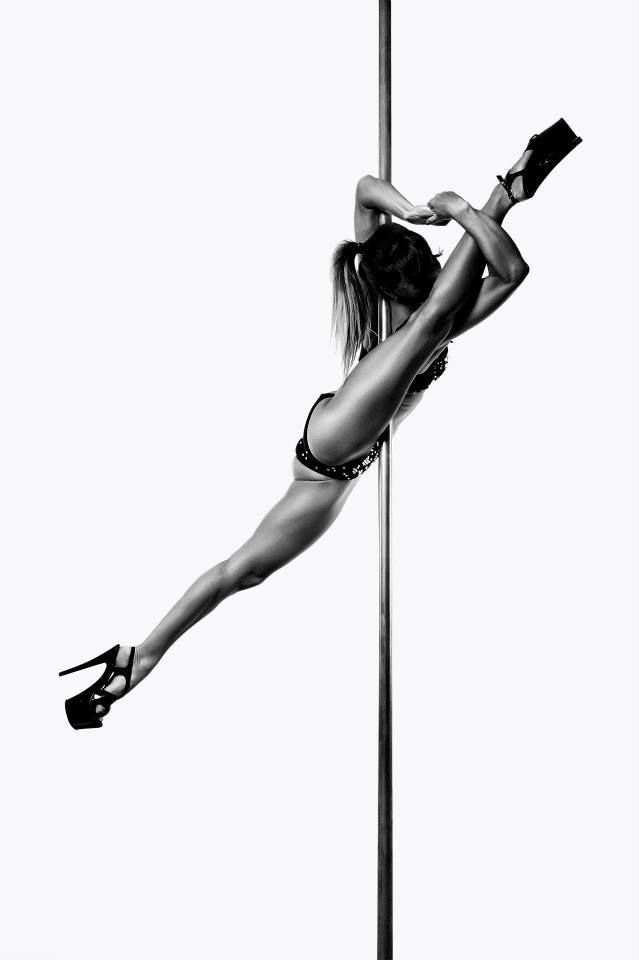 Any coach also once slid down from a pole, could not climb a pylon and was afraid to hang on one leg upside down.
Any coach also once slid down from a pole, could not climb a pylon and was afraid to hang on one leg upside down.
Clothing. For training, you need to take short shorts, a top or T-shirt, socks for warm-up and cool-down. Tricks in semi-sports are performed barefoot, and in exotics - in special shoes.
/sportstat/
What sports do Russians do
The more revealing the clothes, the better: you need a good grip on the pole, which comes at the expense of the skin.
Shoes. Exotic needs shoes - strips. It is not necessary to buy them right away, but you need to bring at least high heels with you. Sometimes in studios they are not allowed to dance in ordinary sandals, as they scratch the parquet. Or they ask you to seal the heel with adhesive tape - this can be found out in advance when signing up for classes.
Strips vary in height: from one, which has a heel height of 15 cm, platforms - 5 cm, to five, which has a heel height of 25 cm, platforms - 15 cm.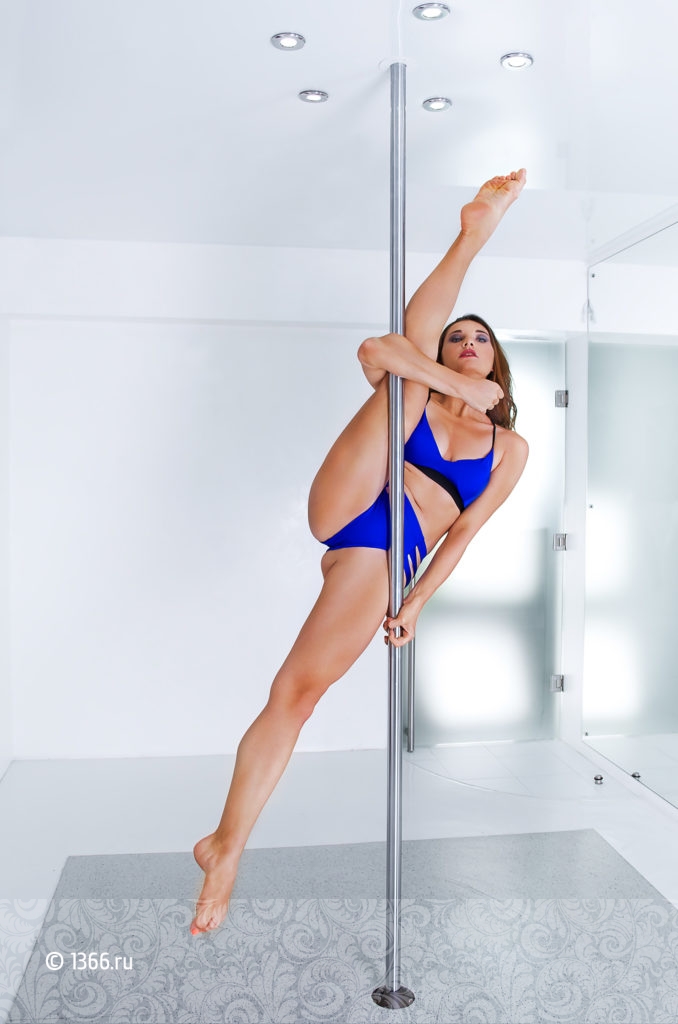 There are sandals, boots and even over the knee boots.
There are sandals, boots and even over the knee boots.
Beginners should start with ones. In the classes, you will not only have to learn how to stand and move on them, but also work out the elements on the bevels, that is, on the tips of the platform.
Knee pads. They are needed for exotic. There are many elements that must be performed while kneeling at the pylon. There are also tricks with jumping on your knees - here knee pads help soften the blows.
Bruise remedies. It is better to take care of possible bruises in advance - they can be in the most unexpected places. But this is temporary - as a rule, after two or three months, bruising is no longer a concern. Even at first, calluses may appear on the hands due to practicing the grip. Later, the skin will get used to it, and this problem will go away.
For accelerated healing of bruises, you can use ointments with heparin, and for the treatment of corns - a moisturizer and cream with urea in the composition.
Who shouldn't practice half-dance
People with severe chronic diseases, in particular, diseases of the heart, lungs, nervous system, kidneys, diabetes mellitus, should not practice half-dance. That is, for those for whom any intense physical activity and leg injuries can be dangerous.
When to consult a doctor before exercising - Mayo Clinic
In addition, classes may be contraindicated for people who have diseases of the spine and joints when they should not be overloaded, or severe skin diseases that may interfere with pole training or be aggravated by friction.
This sport is also not suitable for pregnant women, as during the performance of tricks you can fall or hit your stomach.
/sport-pregnancy/
How to stay fit and healthy during pregnancy
In other situations, everything is decided individually.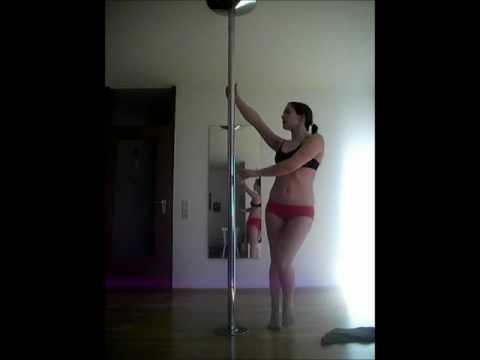 I have low blood pressure and problems with the vestibular apparatus, but I have been doing pole sports for six years. In any case, you first need to consult a doctor, explain what the loads will be, so that he gives permission for classes. Usually, studios do not require a doctor's certificate, but I recommend that you insure yourself and take care of your health on your own.
I have low blood pressure and problems with the vestibular apparatus, but I have been doing pole sports for six years. In any case, you first need to consult a doctor, explain what the loads will be, so that he gives permission for classes. Usually, studios do not require a doctor's certificate, but I recommend that you insure yourself and take care of your health on your own.
Safety precautions for half-dance classes
Half-dance classes are classified as traumatic, so safety precautions must be observed. Each studio introduces the student to the signature requirements.
Leather. On the day of class, you can not use cream, lotion or body oil, go to the solarium or sunbathe - in this case, suntan creams or sunscreens are also applied. Any substances on the skin impair grip on the pole and increase the risk of slipping off the pole.
5 frequent injuries during solo sports
Jewelry. They must be left at home - they will interfere.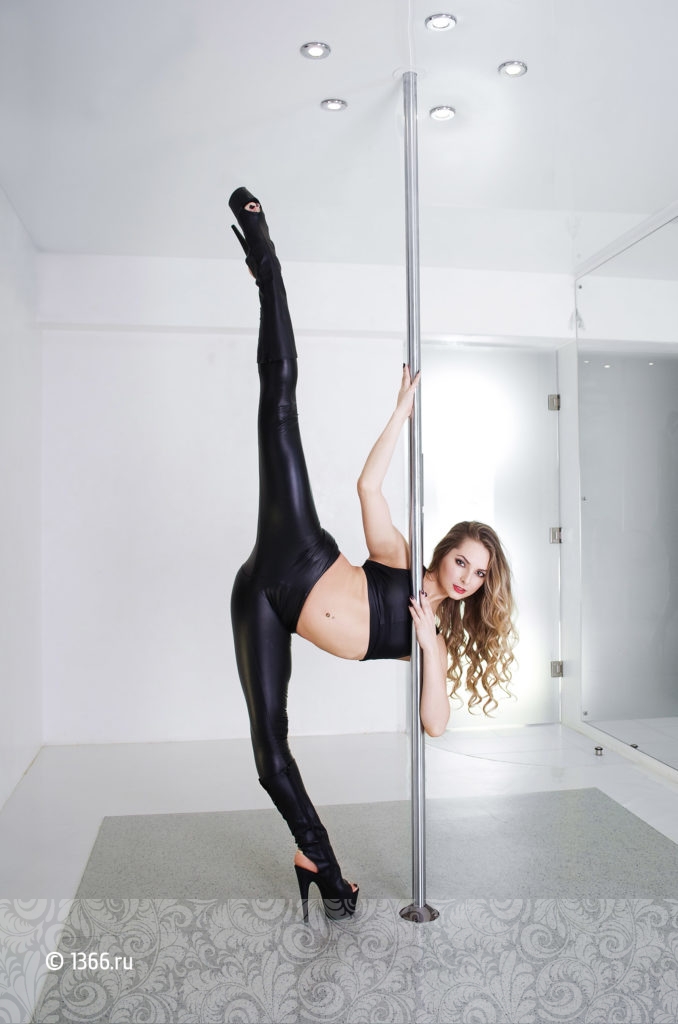 For safety reasons, the coach must ask to remove all rings, earrings, beads, chains, bracelets, sharp hairpins and piercings.
For safety reasons, the coach must ask to remove all rings, earrings, beads, chains, bracelets, sharp hairpins and piercings.
Hairstyle. For semi-sports, it is better to collect hair, as it will interfere, and can also get tangled behind the pole.
For example, at one performance, my student's hair got caught in the bottom of the pole. Since she was twisting upside down, her hair was wound and caught. She was not injured, but she had to hang upside down while we pulled her hair out.
But on exotics, hair is usually left loose, because it is used for dancing: they twist or wave their heads, playfully throw their hair back with their hands.
Food. The last meal should be approximately two hours before training. Otherwise, twists on the pylon can make you feel sick.
Behavior in class. You can start training only after a warm-up, perform elements on mats and with a coach's insurance. You can’t jump off the pylon, if it’s not provided for by the trick, it’s unacceptable to relax the holding muscles - you can slide off the pylon, dropping onto your shoulders or forearms.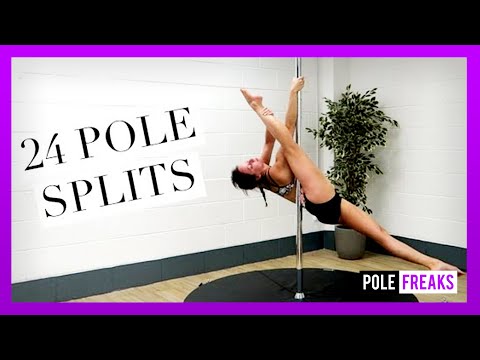
When performing tricks, it is important to keep a distance between yourself and other participants. In exotic classes, you need to work out the trick first with bare feet, and only then in strips.
What kind of injuries can you get during half-dance lessons?
Half-dance lessons require attention and concentration. There were cases when the dancers spun strongly, flew off the pylon and got a fracture. Sometimes equipment failed: it was not installed securely enough or poorly secured.
The most common and minor injuries that you can get in class are bruises or abrasions from hooks and hangs. At the beginning of training, until the skin is used to it, they will occur much more often. I have sensitive skin, so even after a few years, bruising periodically appeared.
/list/sports-health/
12 important questions for sports doctor Artem Ryzhenko
There is a high load on the joints and ligaments during the classes. For example, when performing some elements, the arms should be straight - in fact, the emphasis is on the wrist. If this causes discomfort, wristbands or elastic bandages can be used.
For example, when performing some elements, the arms should be straight - in fact, the emphasis is on the wrist. If this causes discomfort, wristbands or elastic bandages can be used.
Six years later, I had a problem with the wrist of my left supporting hand - I always focused on it for racks and other elements.
It is very important to control your feelings: there should be no pain. If something hurts after completing the element, you need to rest. If the situation persists, you should consult a doctor.
And if a sprain or other minor injury occurs during the session, the training must be temporarily stopped. Until the body recovers, loading on the pylon is prohibited.
To avoid a fracture, it is important to follow safety precautions. The main thing is to never do tricks without mats and not let go of your arms and legs if the clutch has not happened. When it is clear that you are not holding on to the pole upside down, you need to tilt your head to your chest and slide down the pole to the floor on your shoulders. You should never tilt your head back to your back, so as not to fall in this position and injure your neck.
You should never tilt your head back to your back, so as not to fall in this position and injure your neck.
How to choose a pole dance school and coach
Equipment. It is necessary to check if there are mats and ask how the poles are fixed, what company the pylons are installed. The highest quality ones are from Pole4You. Your health and life depend on it.
Teacher training. It is important whether the studio coaches have certificates confirming the right to teach half-dance. Otherwise, they may not properly apply the load, causing injury.
/list/dance-schools/
From waltz to bachata: where they will learn to dance in Moscow
It is necessary that the coach learn the methods of teaching half-dance, go through theory and practice, pass tests and exams. Training cannot be less than 96 hours, because otherwise you cannot master the program.
Certificates are issued by half-dance studios with titled teachers and extensive experience. Typically, such organizations belong to a pol-dance federation or represent it themselves.
Typically, such organizations belong to a pol-dance federation or represent it themselves.
Competitions. It is important what competitions teachers and students of the studio take part in and how often: if the school is active in the outside world, then it will be more interesting to study there.
Number of students per pylon. There should not be too many students in groups - a maximum of two people per pylon. Otherwise, there will be no time to practice tricks.
First conversation with the trainer. The teacher needs to know about the physical condition, diseases and contraindications. You must be told what you can and cannot do in class, and you must sign an agreement with the safety rules.
Communication with the trainer. It depends on him what mood the student is in, how he progresses, what results he achieves. You should be comfortable with the coach. If this is not the case, you need to change the coach, otherwise effective training will not work.
Coach qualification. He must have completed half-dance courses. It is also worth asking about experience: how many years he has been teaching, what successes his students have. It is good if in the past the coach was involved in professional sports or dancing, usually in this case the quality of teaching is higher.
It is also important how clearly the coach explains the technique of performing tricks and how he monitors safety: does he insure each student, does he require the use of a mat.
How much does it cost to do half-dance
Regular lessons. Usually dance studios offer several subscriptions to choose from: 8, 12, 16 group lessons. It makes no sense to go to training less than twice a week, that is, you need at least eight classes a month.
To practice semi-sports, you will need to spend money on a uniform and a subscription. Exotic half-dance requires a lot of money: you will also have to buy special shoes and knee pads.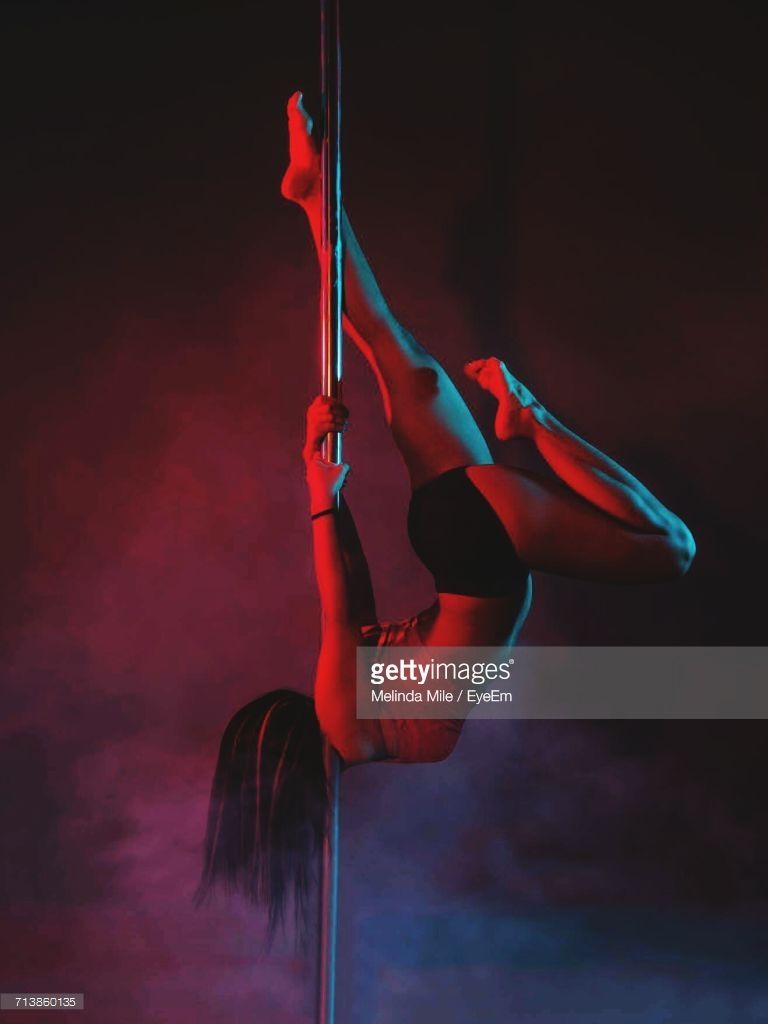 Then you will only need to pay for a subscription to the studio and change clothes and shoes as they wear out.
Then you will only need to pay for a subscription to the studio and change clothes and shoes as they wear out.
/list/hochu-mogu/
8 extreme hobbies that cost people a lot of money
Half-sport classes in the first month cost from 6500 R
| Subscription for 8 lessons | 2500-5000 R |
| Shape: top and shorts | 3500 R |
| Socks | 500 R |
Subscription for 8 lessons
2500-5000 Р
Form: top and shorts
3500 R
Socks
500 R
Semi-exotic classes in the first month cost from 13 000 R
| Strips | 5000 R |
| Subscription for 8 lessons | 2500-5000 R |
| Shape: top and shorts | 3500 R |
| Knee pads | 2000 R |
Strips
5000 R
Subscription for 8 lessons
2500-5000 R
Uniform: top and shorts
3500 R
Knee pads
2000 R
Participation in competition costs - 9018 For example, the participation fee starts from 1000 R.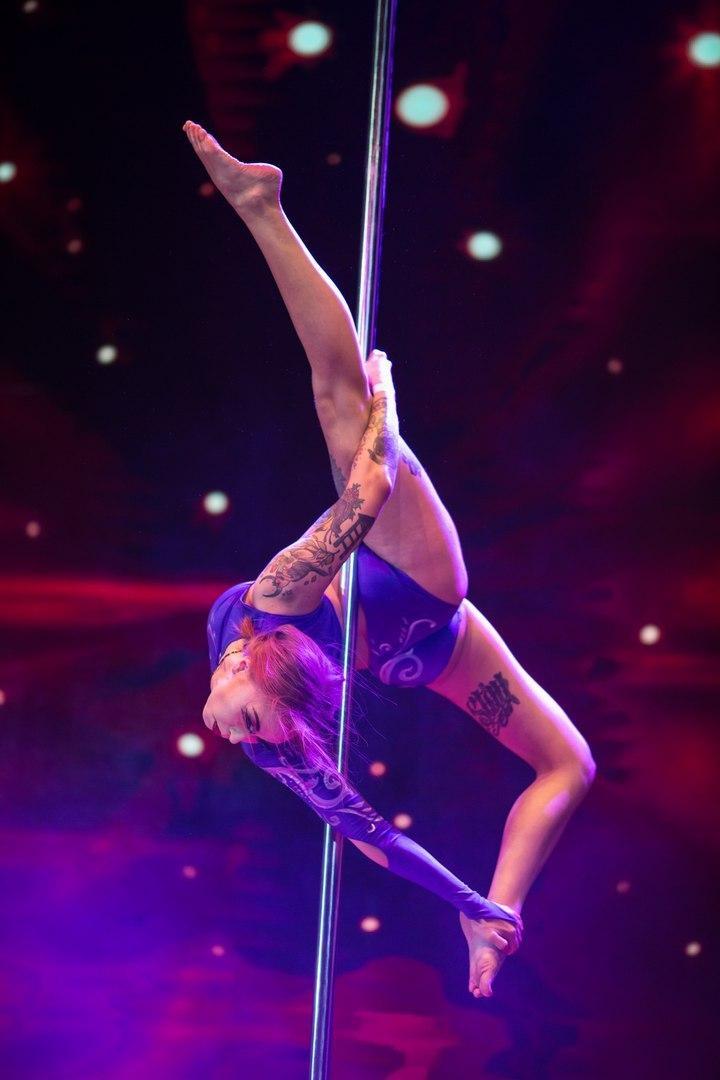 You also need to sew or buy a special suit - this is at least 3000 R. New strips for competitions are usually not bought. The dancer gets used to those in which he trains, in new ones there is a higher risk of falling.
You also need to sew or buy a special suit - this is at least 3000 R. New strips for competitions are usually not bought. The dancer gets used to those in which he trains, in new ones there is a higher risk of falling.
You also need to pay for individual lessons with a trainer to work out the number and rent the studio hall for independent training - they are needed to consolidate the result.
A personal lesson with a trainer costs an average of 1500 R, but its price can reach up to 3000 R. The number of lessons depends on the competitions themselves, the level of training, the complexity of the number. The minimum number of trainings for setting a number is four. Renting a studio for self-training will cost about 5,000 R for 10 times.
Preparation for pole dance competitions will cost about 15,000 R
| 4 personal lessons with a trainer | 6000 Р |
| Room rental for 10 self-study | 5000 R |
| Special suit | 3000 R |
| Participation fee | 1000 R |
4 Personal classes with a coach
6000 R
Renting of the hall for 10 independent classes
5000 R
Special costume
9000 3000 3000 RFund for participation
1000 R
Remember
- Pole dance is a pole dance that combines elements of choreography, gymnastics and acrobatics.

- All directions of half-dance are intertwined with each other. You can't dance without tricks or choreography.
- One session actually replaces a circuit training, where exercises for different muscle groups are repeated several times - the same number of calories can be spent. In addition, classes on the pole train the skill of controlling the whole body.
- You can practice from scratch without any preparation. Usually, students are divided into groups of beginners and those who have been studying for a long time.
- At the beginning of each workout, a mandatory warm-up, and after it - stretching or exercises without a pole.
- To start doing semi-sports, you only need a uniform, and for exotic you also need special shoes and knee pads.
- Training is contraindicated for people with severe chronic diseases and pregnant women.
- Pole dance is classified as a traumatic sport, so it is important to follow the safety precautions that you should be introduced to in the studio.

- When choosing, you should pay attention to the quality of equipment in the studio, the qualifications of the coach and comfort while communicating with him.
Health news, interviews with doctors and instructions for patients in our telegram channel. Subscribe to keep abreast of what is happening: @t_zdorov.
Pole dance lessons. Questions and Answers
On this page we have collected the most typical questions that our future students ask us when they are going to master the direction of Pole Dance from scratch. If you are planning to start learning pole dance, pole sport or exotic pole dance, attend stretching classes, be sure to read this material, it will help you prepare for classes and create the right mood. Also, you might be interested to know that many beginners have the same questions...
- I have no athletic or dance training. Can I learn something?
-
You definitely can! Over the years of our school's existence (since 2008), we have trained almost 10 thousand graduates, and approximately 80% of them came to us without ever doing anything before.
 Of course, it will be easier for you if you lead an active lifestyle, work out in a fitness club - but even if this is not the case, believe me: Everything is in your hands, there would be a desire!
Of course, it will be easier for you if you lead an active lifestyle, work out in a fitness club - but even if this is not the case, believe me: Everything is in your hands, there would be a desire! Pole Dance is a very intense sport and dance. Your muscles will get stronger faster than you think. And with regular classes twice a week, in a couple of months you will have something to demonstrate to your friends: there are a lot of simple but beautiful elements in pole dancing that are accessible to the average person.
- What to bring to class, what kind of clothes?
-
Dress code depends on which direction you choose. There are a few basic rules that will help you feel more comfortable during your workout, but we leave the rest up to you, we don't have a strict dress code!
1) To work with the pole (pole dance, pole sport, exotic) your legs from the middle of the thigh and below must be open.
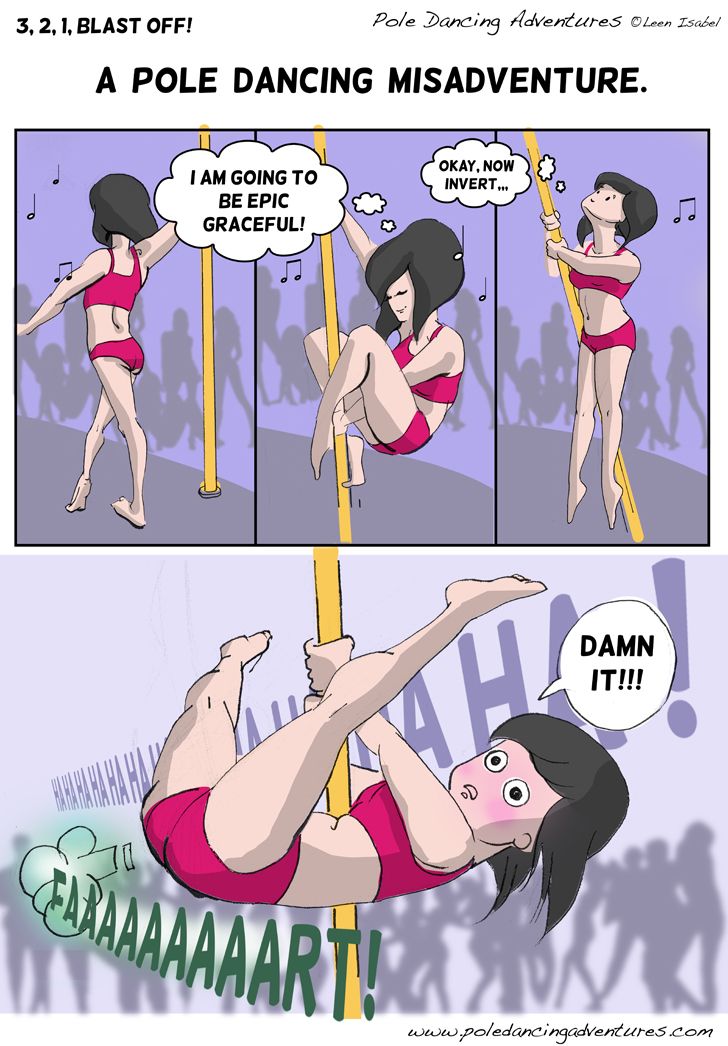 This is necessary to stay on the pylon - any fabric will slide. You will need shorts, preferably made of stretch fabric, without any metal rivets or decorative elements (any fittings, especially metal ones, damage the poles and pose a danger during the execution of the elements). Often, students use shorts made of dense opaque fabric from the “seamless underwear” category, which can be bought at any lingerie store, as shorts.
This is necessary to stay on the pylon - any fabric will slide. You will need shorts, preferably made of stretch fabric, without any metal rivets or decorative elements (any fittings, especially metal ones, damage the poles and pose a danger during the execution of the elements). Often, students use shorts made of dense opaque fabric from the “seamless underwear” category, which can be bought at any lingerie store, as shorts. It is also desirable to choose a top that is tight and reveals the maximum area of your body - it can be a knitted T-shirt or an elastic top that opens the stomach. None of your clothes should hang loose or hinder your movements in any way. Any “extra” fabric is an obstacle between your body and the smooth metal surface of the pole, creating a completely unnecessary sliding effect in this sport and increasing the risk of injury.
2) When training stripplastik (stripdance) , as well as Dance-To-Slim (Dance and Slim) the only requirement is that the clothes be comfortable and tight, allowing you and your choreographer to control the correct execution of your dance movements.
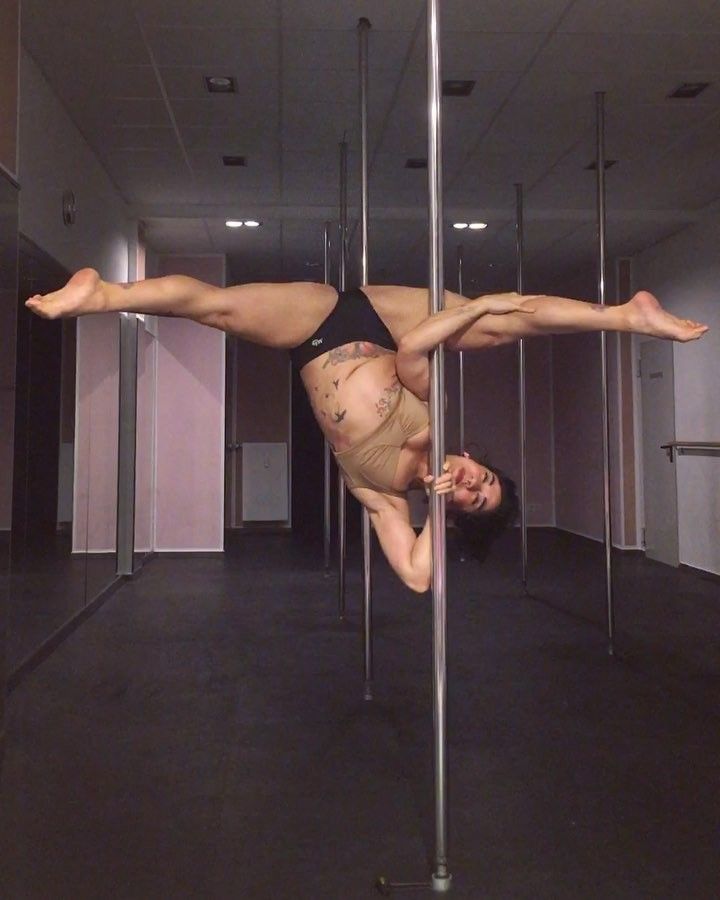 Choose tight sports trousers or leggings, and to them - a T-shirt or top made of thin natural fabric. Remember that baggy and layered clothes, all types of trousers that hip-hop, ragga, etc. are so fond of, do not at all correspond to the energy of the strip-plastic / strip-dance style and are unlikely to help you tune in in the right way.
Choose tight sports trousers or leggings, and to them - a T-shirt or top made of thin natural fabric. Remember that baggy and layered clothes, all types of trousers that hip-hop, ragga, etc. are so fond of, do not at all correspond to the energy of the strip-plastic / strip-dance style and are unlikely to help you tune in in the right way. 3) For stretching , any sportswear (tracksuit) is suitable, it is better to prefer sports trousers to shorts. Don't forget to take your running shoes with you, because stretching is always preceded by a good quality warm-up, and only then you can "relax" on the mat.
4) For the warm-up that starts any dance session, you'll need a zip-up jersey sweatshirt or light tracksuit jacket to keep you comfortable until you warm up, especially if you're It's hot outside and the air conditioner is on. Also, to warm up, dancers often use leggings - usually woolen, slightly above the ankle or knee length, sometimes with a hole for the heel.
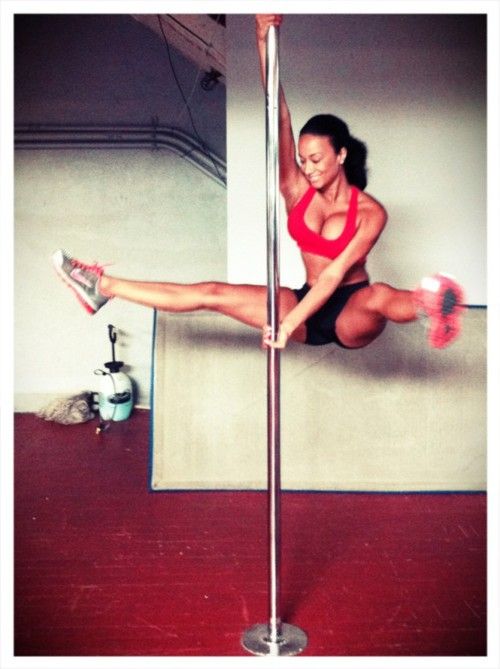
Shoes for training choose depending on what kind of training you are going to:
- Classic Pole Dance. You will need fabric ballet flats or jazz shoes; if not, just take a pair of socks with you. Some even experienced pole dancers prefer to perform and practice barefoot - and many beginners do the same. Sneakers are NOT suitable for this sport/dance as the foot is actively working in it.
- Pole Sport Acrobatics. Training is done barefoot. We take socks for a better warm-up at the beginning of the lesson, which makes training safer.
- Exotic Pole Dance. It is highly desirable to have special shoes “for striptease” with you - shoes with a high platform and equally high heels, the so-called “strips”. If they are not available, you can use shoes for ballroom dancing (for Latin) - heeled sandals. But, even if you don’t have suitable shoes with heels at all, come anyway, at first you can practice in socks, just the coach will remind you that you need to follow the technique of the foot in the dance.

- Dance-To-Slim dance directions, strip plastics, etc. Suitable for both lightweight cardio trainers and latin dance sandals.
- Stretching, Split Stretching. You need to bring running shoes to warm up and socks for stretching (working on the mat). Remember not to stretch on the mat while wearing sneakers - this is unhygienic, technically wrong (insufficient stretching of the ankle muscles) and leads to rapid wear of the mats.
5) You MUST REMOVE any metal jewelry (rings, bracelets, chains, piercings) during class. This will avoid the risk of injury to yourself during the execution of the elements, and will also protect our sports equipment - pylons - from damage. Fines are set for violation of this requirement in the studios.
- What (what type of dance) should I start with? Or maybe start with stretching lessons?..”
-
The answer to this question depends on what your GOALS are.
If the most important of them is to learn to DANCE, you can start with both classical Pole Dance and Exotic Pole Dance: they have about the same element base, for the first 2 months you will study the “ABC” of pole dance (twists, transitions , plasticity and the basics of parterre acrobatics).
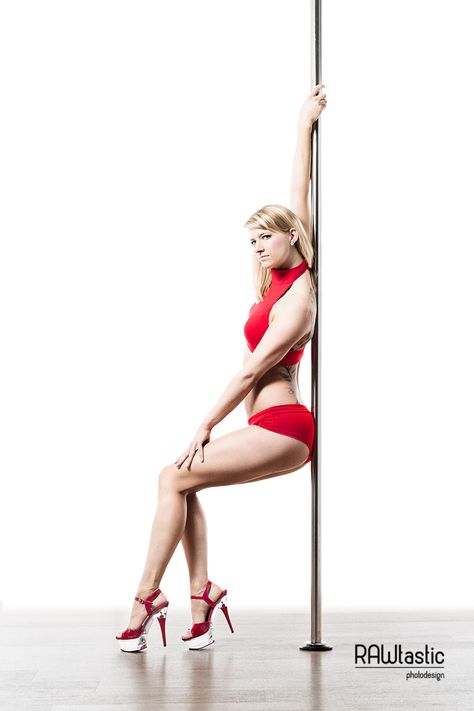 If during this time you realize that you are more interested in STUNTS AND ACROBATICS - welcome to Pole Sport, or you can stay within the Pole Dance style, but as your skill grows, you will learn more and more complex gymnastic elements. If you would just like to “DO SOMETHING”, especially without straining, but at the same time be in good shape; if you just need a healthy and healthy way to RELAX after a hard day's work - come to the stretch.
If during this time you realize that you are more interested in STUNTS AND ACROBATICS - welcome to Pole Sport, or you can stay within the Pole Dance style, but as your skill grows, you will learn more and more complex gymnastic elements. If you would just like to “DO SOMETHING”, especially without straining, but at the same time be in good shape; if you just need a healthy and healthy way to RELAX after a hard day's work - come to the stretch. If you want to have a BEAUTIFUL MUSCLE RELIEF, tighten problem areas, i.e. you need a complete analogue of the gym - Pole Dance and Pole Sport are equally suitable for you. If you need cardio loads, you want to LOSE WEIGHT - choose Exotic Pole Dance or Dance-To-Slim, as well as Flexibility and Strength. If you have been dreaming of TWINE since childhood, you want to be FLEXIBLE, then you have a direct road to Stretching classes.
“Start with stretching” – it is possible and necessary, it is another matter that this process is not fast and, moreover, has nothing to do with the ability to dance.
 Of course, the presence of a twine will significantly decorate your pole dance, but it is hardly worth waiting 2-3 months until you have a twine if your soul asks for a dance here and now! Listen to yourself, be guided by your desires and feelings - and start with what your soul and body are drawn to.
Of course, the presence of a twine will significantly decorate your pole dance, but it is hardly worth waiting 2-3 months until you have a twine if your soul asks for a dance here and now! Listen to yourself, be guided by your desires and feelings - and start with what your soul and body are drawn to. If you have the opportunity to do both pole dance and stretching in parallel, this is the best option, which gives the fastest progress. In any case, for each pole dance subscription you buy, we will give you a FREE STRETCHING LESSON so that you have the opportunity to try this direction and take a dozen or two effective techniques for self-stretching into your piggy bank.
- Do you have groups for beginners?
-
Before answering this question, let's think: who are beginners? These are people just taking their first steps in this type of dance is - and this is the only thing that unites them. Indeed, among them there are those who, in childhood, were engaged, for example, in choreography or folk dances, but then abandoned classes for many years; there are graduates of a music school who have an excellent ear for music, but are completely unable to move; there are naturally flexible and plastic, and there are those who consider themselves a "real tree"; there are physically strong (again, thanks to good heredity) and there are fragile, weak, with insufficient muscle mass .
 .. Each of the so-called "beginners" will have their own, absolutely UNIQUE LEARNING PACE and their own, completely different from other members of the group, difficulties and problems in the learning process. Because each of us is a unique individual. And if you look closely at any artificially assembled "beginning" group, then in fact it will turn out to be completely motley ...
.. Each of the so-called "beginners" will have their own, absolutely UNIQUE LEARNING PACE and their own, completely different from other members of the group, difficulties and problems in the learning process. Because each of us is a unique individual. And if you look closely at any artificially assembled "beginning" group, then in fact it will turn out to be completely motley ... The only optimal way to solve this problem is an INDIVIDUAL APPROACH OF THE TEACHER, i.e. in the literal sense, the number of times that he approaches each student during the lesson in order to personally explain the material to her. And here the term of your training ceases to be important and comes to the fore Your real level of training , which may not correspond to the “arithmetic mean” of the group, differing both up and down.
And when learning pole dance, it is of utmost importance that you have a PERSONAL PYLON throughout the entire lesson. Only in this case, you have the opportunity to learn at your own pace and do not depend on the level of the other members of the group, who can progress much more slowly or, conversely, faster than you only because of their genetic characteristics.

Therefore, the best dance schools have long abandoned the outdated division of groups into “beginners” and “advanced”, invented in order to simplify the work of the coach, and practice a more competent and modern principle: “Teaching in small (small) groups using an individual approach teacher".
- I am __ years old. Is it too late to start studying at your school? What are the age restrictions?
-
Answer: NEVER LATE!!!
Firstly: Pole Dance is basically a sport only for adults, from 18 years old, people, due to its technical and ethical features.
Secondly: IN THE PART CONCERNING THE EXOTIC DIRECTION - we position ourselves as a school for adult girls and women - adults so that they realize, feel and accept their femininity. This realization can come to us at 18 or 45 – and that is why it is never too late to start working on discovering your feminine essence and allowing it to bloom. Dance practices, which are based on erotic, seductive overtones, have long been considered one of the fastest and most effective ways to establish contact with your “inner goddess”, achieve harmony with yourself and, as a result, harmonize your relationships with men.
 Our students all unanimously say that after the start of classes at our School, their personal life has changed significantly for the better: someone got married successfully, someone managed to bring relations with an existing partner to a new level (somehow easily and imperceptibly!), and someone just felt so free and attractive person that he lives and enjoys the attention of numerous fans, not thinking about tomorrow. There's also a lot of positive feedback about the "amazing" career advancement, the change in attitude from management and male co-workers... There are a few unexpected romances with the boss, but that's another topic for discussion. And your age is not a topic for discussion at all. In any case, she has nothing to do with dancing.
Our students all unanimously say that after the start of classes at our School, their personal life has changed significantly for the better: someone got married successfully, someone managed to bring relations with an existing partner to a new level (somehow easily and imperceptibly!), and someone just felt so free and attractive person that he lives and enjoys the attention of numerous fans, not thinking about tomorrow. There's also a lot of positive feedback about the "amazing" career advancement, the change in attitude from management and male co-workers... There are a few unexpected romances with the boss, but that's another topic for discussion. And your age is not a topic for discussion at all. In any case, she has nothing to do with dancing. - Can I do Pole Dance if I am overweight?
-
Yes, you can. In our groups, not only “slender girls” and “phytonies” are involved, plump girls often come - often they are very plastic, naturally move well.
The pylon is able to withstand almost ANY WEIGHT of a person practicing on it, from this point of view there is no danger.

If you follow the usual principles of proper nutrition and regular pole training, excess weight, as a rule, gradually disappears.
It should be taken into account that if the weight is very large, intense physical activity, including pole sports, may be contraindicated. It is necessary to protect the cardiovascular system, spine and knees. Therefore, if this is not just fullness, but a really serious problem (obesity), you need to consult a doctor and, possibly, lose some of the weight before starting classes.
- Is it possible to practice Pole Dance if there are problems with the spine (scoliosis, osteochondrosis, etc.)?
-
There is no definite answer. In each specific case, it is necessary to obtain a doctor's permission to practice pole sports, taking into account the condition of the spine. Pole dance involves increased stress on the back, chronic diseases can worsen.
At the same time, pole dancing strengthens the muscular corset well, which allows you to get rid of or prevent a number of possible problems with the spine - for example, prepare your back for subsequent increased stress during pregnancy and after childbirth.

- Do I need to take various special equipment with me to Pole Dance - pole gloves, chalk, wax and other means to grip the pole?
-
No, you don't! Better take a good mood and positive attitude with you ;)
We want our students to feel as confident as possible on the pole - regardless of whether they took gloves with them or left them at home. Any aids to keep yourself on the pylon deprive you of self-confidence, delay the onset of your success. Your palms must become calloused in order for you to become subject to serious trick elements.
Wax, chalk and other adhesives were originally developed for professional athletes who perform life-threatening stunts at high altitudes without insurance. Tricks in which it is really difficult or almost impossible to keep yourself on the pole without aids. Therefore, it looks ridiculous and ridiculous when a novice student is offered to use the means of coupling on a standard pylon to perform a simple element like a “slingshot”.
